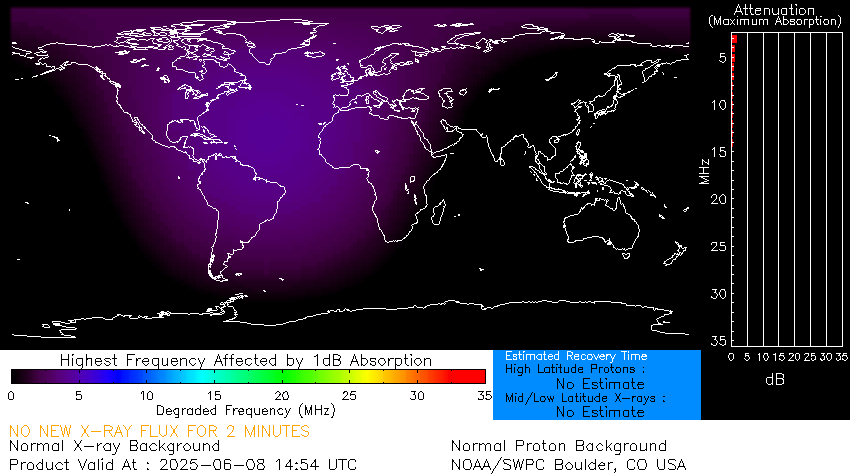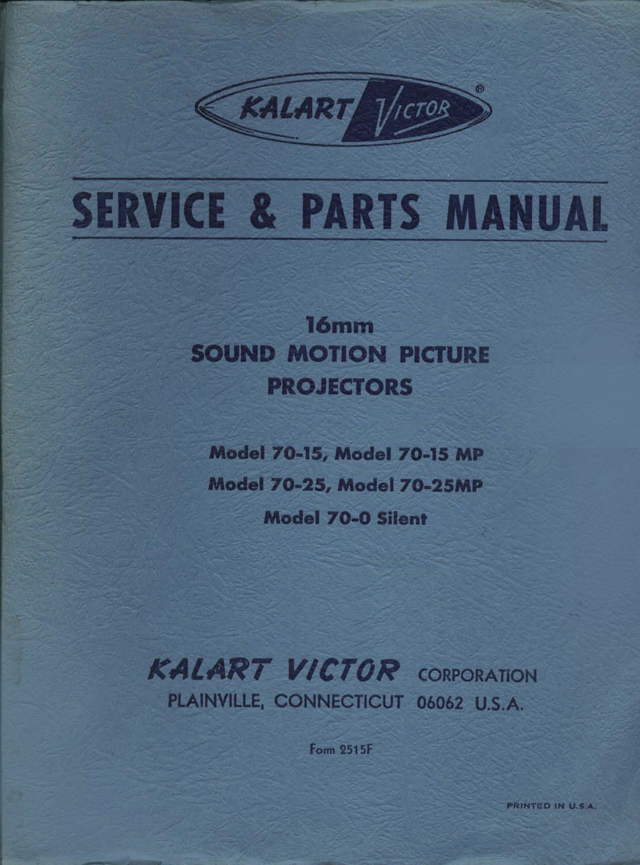The Kalart Victor Corporation
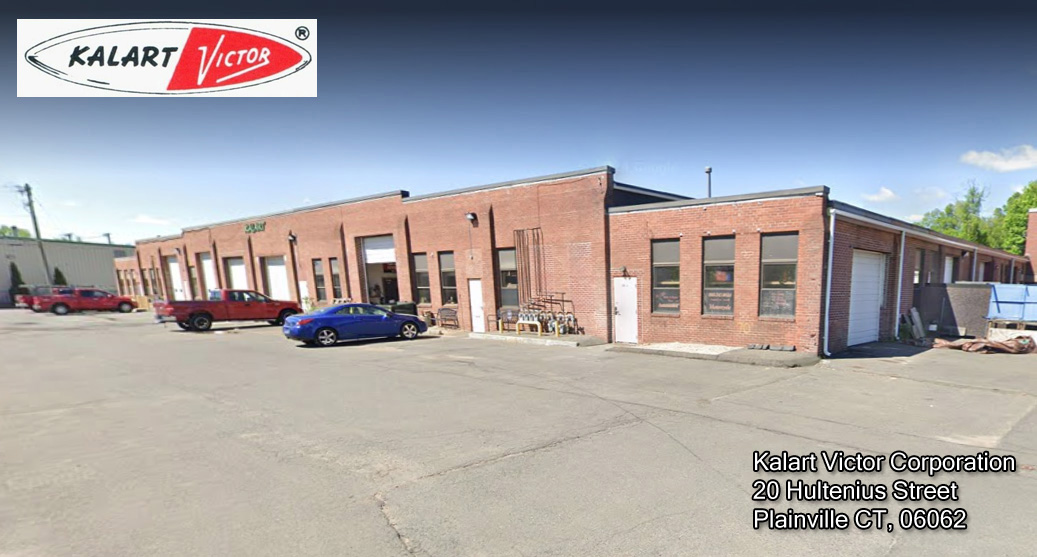
This is my recounting of an amazing company called Kalart Victor. My dad, Henry, worked at Kalart for 41 years from 1948 to 1989 when the company closed. This is a story that combines some general historical facts obtained online as well as from obituaries. It includes my personal memories of the countless conversations I had with my dad when I was a teen, driving him home from work for many years as well as some of my experiences actually being inside the factory as a youth.
The Kalart Victor Corporation was headquartered in Plainville, Connecticut. They were a manufacturer of cameras, projectors and audio-visual products. The Kalart Company was founded in 1930 by Morris A. Schwartz. Kalart closed its doors in August of 1989. Japanese competition from the new videotape and camcorder technology caused a shift from analog film to the convenience and lower cost of digital imaging. Kalart could no longer remain competitive.
Here is the company's chronological history.
- Kalart Company, Inc., Brooklyn NY, Stamford CT, Plainville CT. (1930-1957)
- Kalart acquired Craig Movie Supply Company, Los Angeles CA (1945?)
- Kalart acquired Victor Animatograph Corporation, Davenport IA (1957)
- Company name changed to Kalart-Victor Corporation (1957-1989)
Morris Schwartz - Founder
Morris Schwartz was born in Russia and came to the United States with his parents in 1906. His first job was with the New York Times where he worked in the photo department. Later, he was a staff photographer at the Jewish Daily Forward.
In 1922 he founded Kalart in Brooklyn, N.Y. as an industrial photography lab. Morris Schwarts chose the company name Kalart by using six letters from his father’s name: KALman SchwARTz.
With only an 8th grade education, Morris Schwartz was a prolific inventor. In 1930 he created the first photoflash synchronizer. This enabled press photographers for the first time to take high speed flash photos of indoor sports events with poor lighting conditions. In 1936 he invented the Kalart Range Finder. This was an accessory for the Speed Graphic and other sheet film cameras that provided automatic focusing. In 1962 the National Press Photographers Assn. awarded him their Joseph A. Sprague Award for these and other inventions. He went on to hold over 100 patents in the photographic field.
Morris Schwartz started Kalart in New York City, but at the start of World War II he moved his factory to Stamford, Connecticut. Later, he relocated operations to Plainville, Connecticut. In Plainville, Kalart employed over 300 men and women who made a number of photographic and audiovisual products including the Kalart Camera, Craig 16mm movie editing equipment, Victor 16mm movie projectors, Kalart 8mm editing equipment, the Soundview line of filmstrip projectors and the Tele-Beam projection television. Morris Schwartz passed away in 2004 at the age of 103.
Sometime around 1945 Kalart acquired the Craig Movie Supply Company of Los Angeles, California.
In 1957, Kalart acquired the Victor Animatograph Corporation of Davenport, Iowa. The Victor Animatograph Corporation was founded in Davenport, Iowa in 1910 by Alexander F. Victor. He was born on June 20, 1878 in Bollanäs, Sweden.
Victor Animatograph claimed to have manufactured the world’s first 16mm motion picture projector in September, 1923. Eastman Kodak Company claims it invented the 16mm movie projector two months earlier. Which company deserves the honor was never truly resolved.
Besides cameras, rangefinders, camera flash units, projectors and editors, Kalart manufactured some specialty equipment for the military during World War II. When Kalart was in Stamford, Connecticut, they made things like rangefinders and components for targeting sights used on military artillery.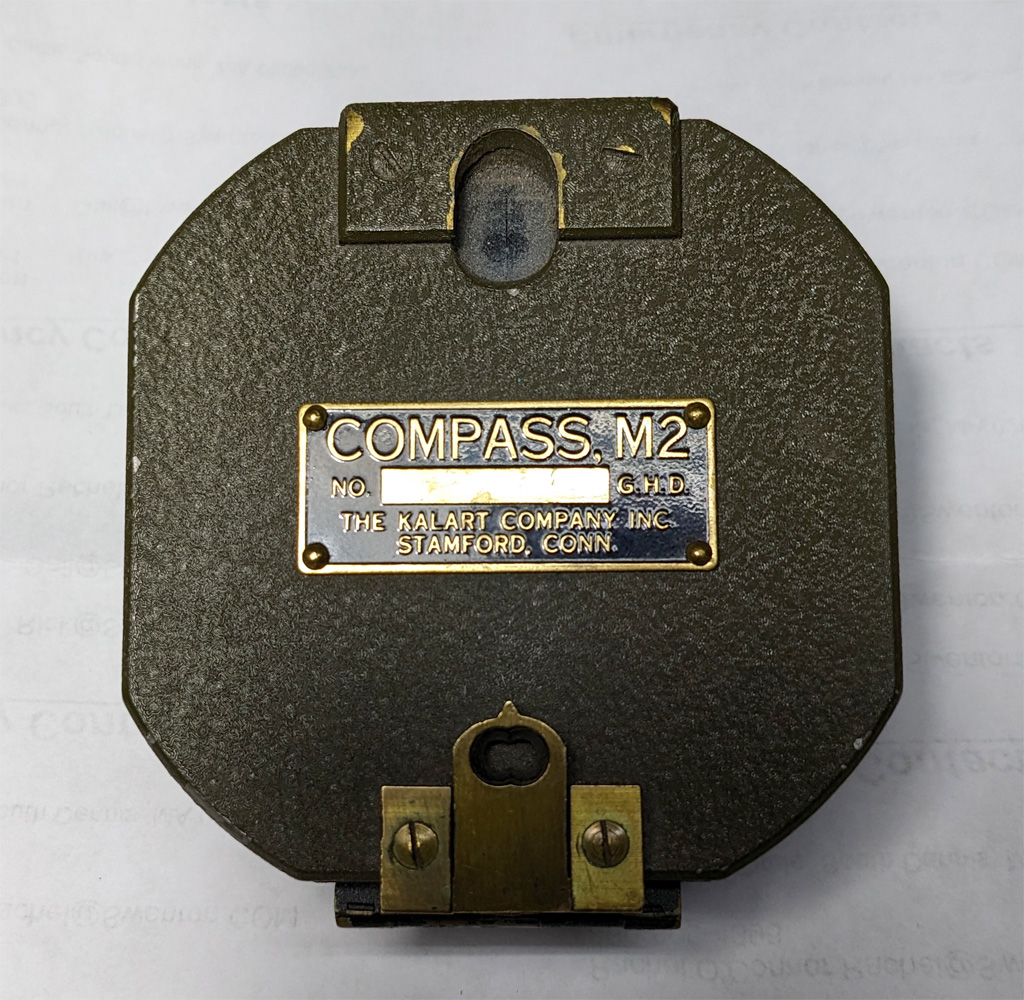
Here is a version of the military M2 compass made by Kalart and given to me by my dad.
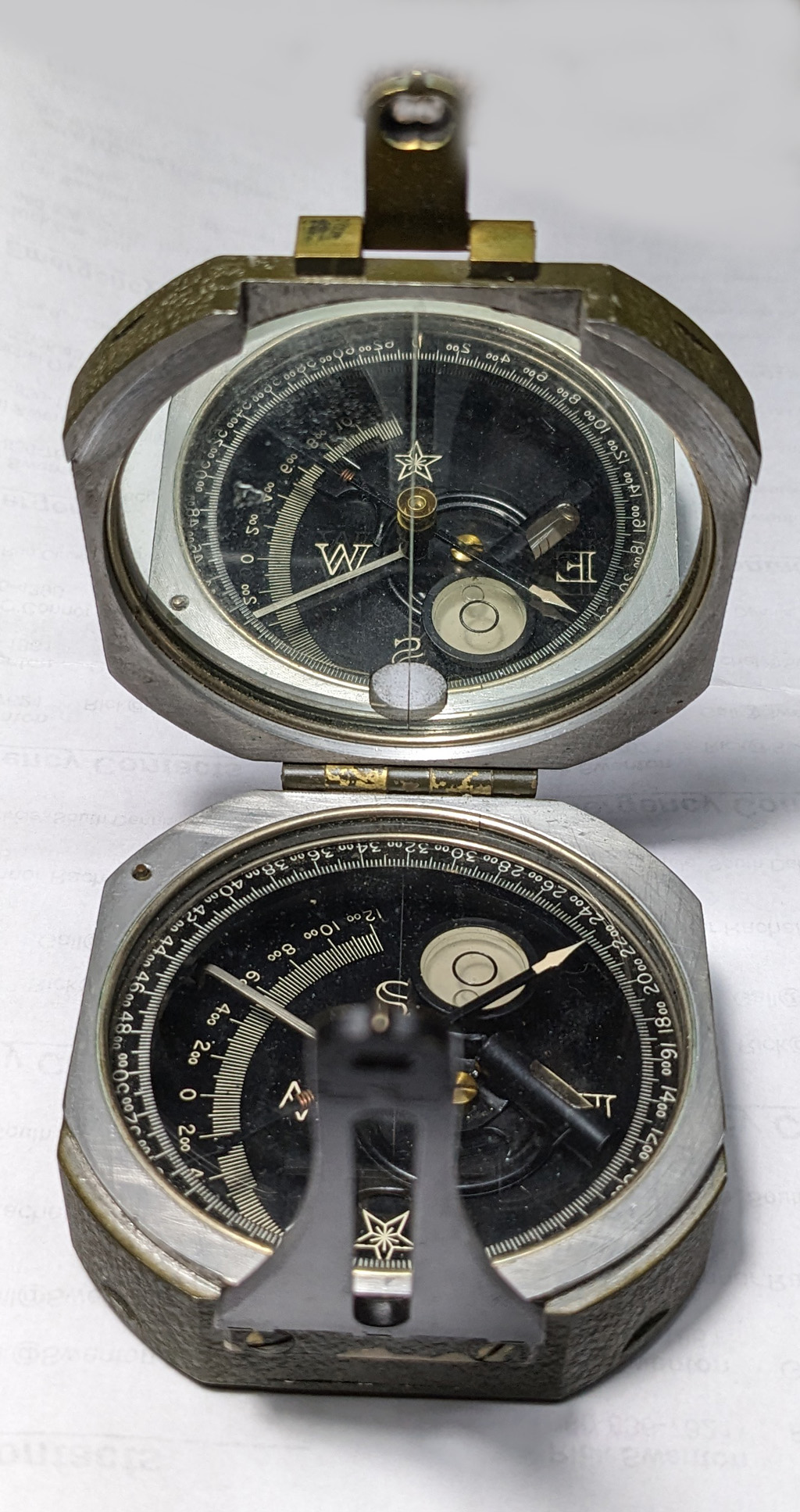
The M2 compass is a multiple-purpose instrument used for obtaining clinometer, angle-of-site, and azimuth
readings. It was used as a reconnaissance instrument for the Field Artillery. It was the standard compass of the Field Artillery.
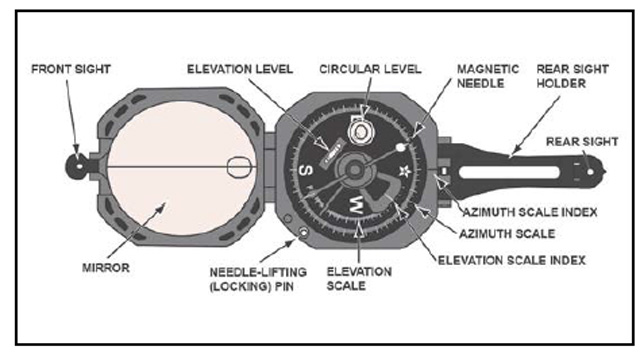
The markings on the compass for East (E) and West (W) are reversed compared to a standard compass.
Most people are familiar with a standard navigation compass, where you turn the housing to align the "N" with the north-pointing needle. East is to the right and West is to the left, which is intuitive when you are facing north.
On a surveyor's compass, the magnetic needle remains stationary while the body of the compass rotates. To take a bearing, you use a sighting device on the compass and turn your body to look at a target. The reversed markings on the dial then allow you to read the correct bearing instantly. The military used this surveyor's compass design to obtain a bearing on a target.
These compasses are still being sold used on Ebay sometimes for almost $200.
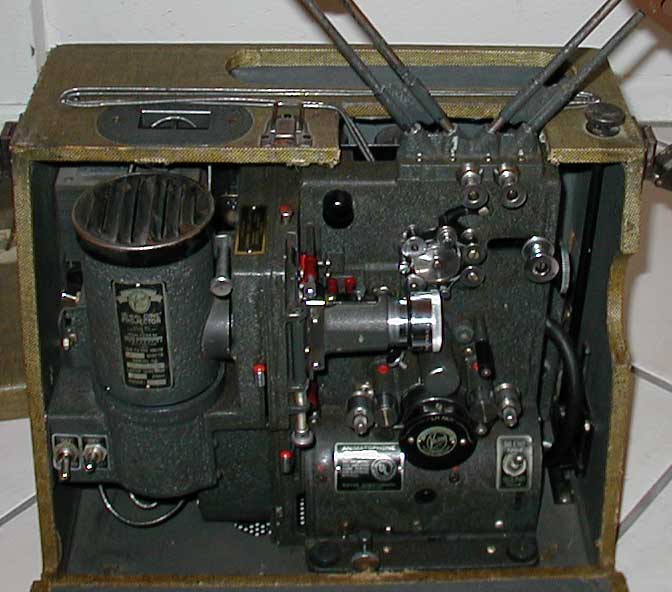
Here two photos of typical projectors manufactured by Victor Animatograph before they were acquired by Kalart. The details of the photos are not good enough to determine the model numbers.
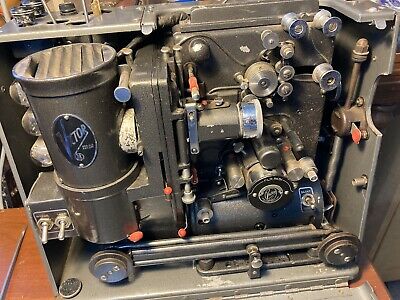
The new company became the Kalart Victor Corporation. Before acquiring Victor Animatograph, Kalart bought the Craig Movie Supply Company. Craig made movie editors.
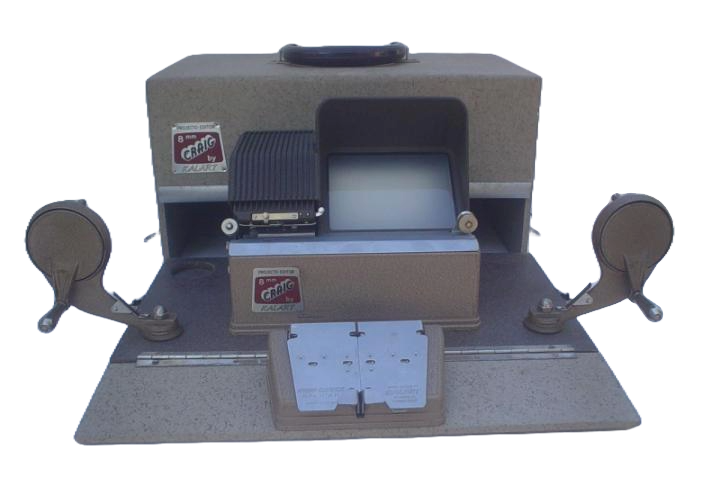
These were manual, hand-cranked film viewers with a film splicer. With Kalart, Victor and Craig products, Kalart had a diverse portfolio of photographic and audio-visual products. In the late 1980's, Kalart was the last American maker of 16mm movie projectors. Nine years later the company doors would close.
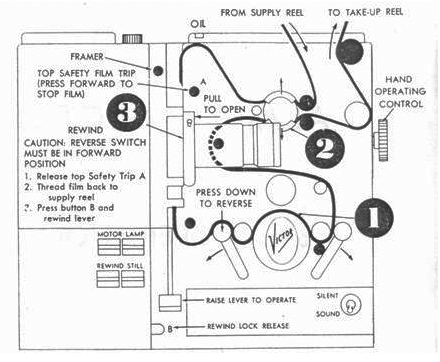 Among all the 16mm projectors on the market, Kalart made the only projector which fed from the rear-mounted supply reel to the front-mounted take-up reel. The competitors’ projectors fed film from the front supply reel to the take-up reel in the rear. This meant that inexperienced operators or those who possessed experience with non-Kalart projectors often had trouble getting the projector to work. While the Kalart projectors may have been confusing to operate they were excellent machines and significantly gentler on film stock. Some film collectors would only allow their films to be shown on Kalart projectors.
Among all the 16mm projectors on the market, Kalart made the only projector which fed from the rear-mounted supply reel to the front-mounted take-up reel. The competitors’ projectors fed film from the front supply reel to the take-up reel in the rear. This meant that inexperienced operators or those who possessed experience with non-Kalart projectors often had trouble getting the projector to work. While the Kalart projectors may have been confusing to operate they were excellent machines and significantly gentler on film stock. Some film collectors would only allow their films to be shown on Kalart projectors.
To Kalart’s credit, the Kalart 16mm projectors earned the reputation of being the quietest of all machines. Kalart projectors delivered amazing picture quality, excellent sound and sustained reliability.
One of Morris Schwartz’s patents was for the self-threading projector. Kalart developed the Easy-Load self-threading projector. This simplified the operation and took the guess-work out of loading the film.
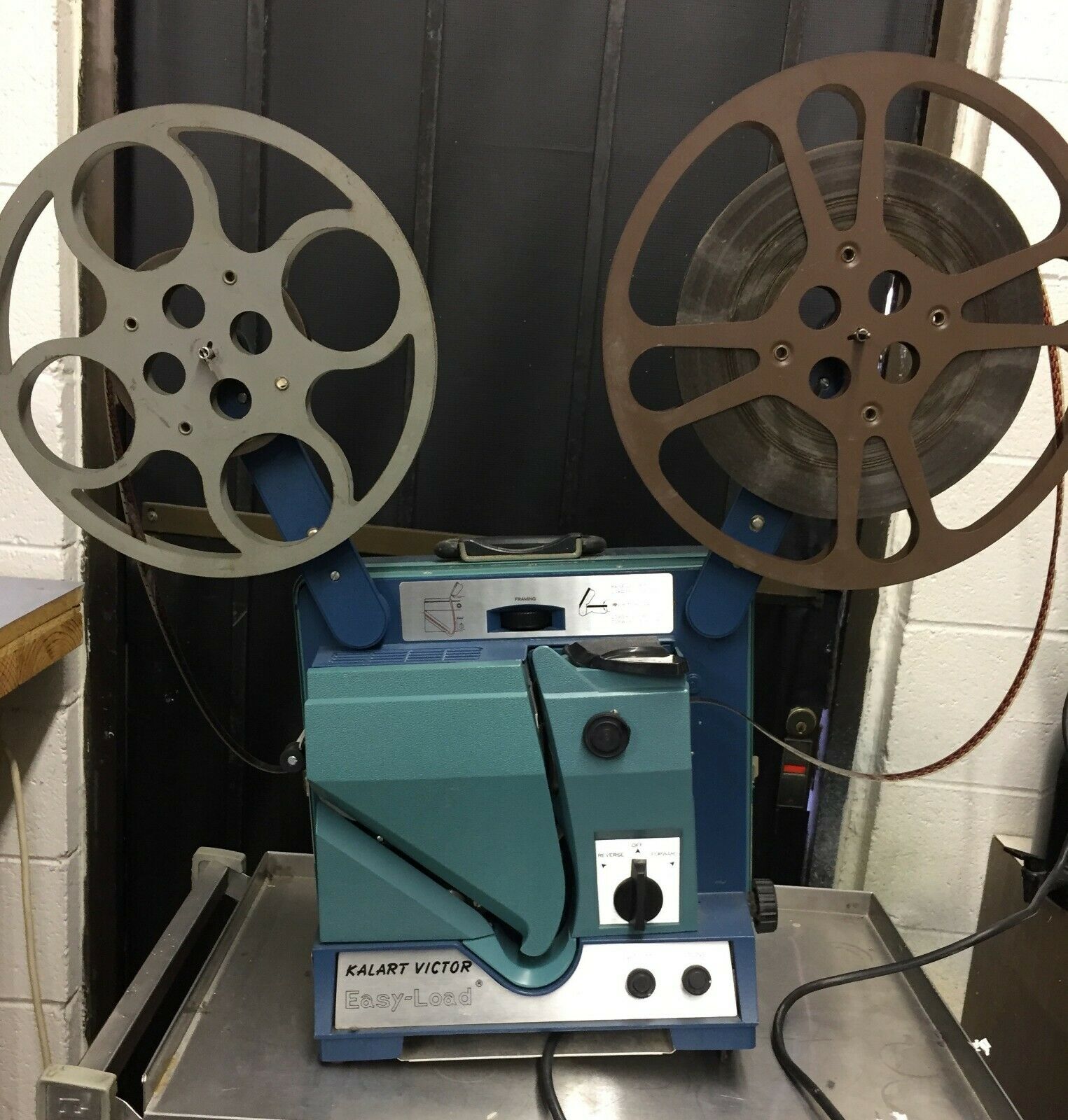
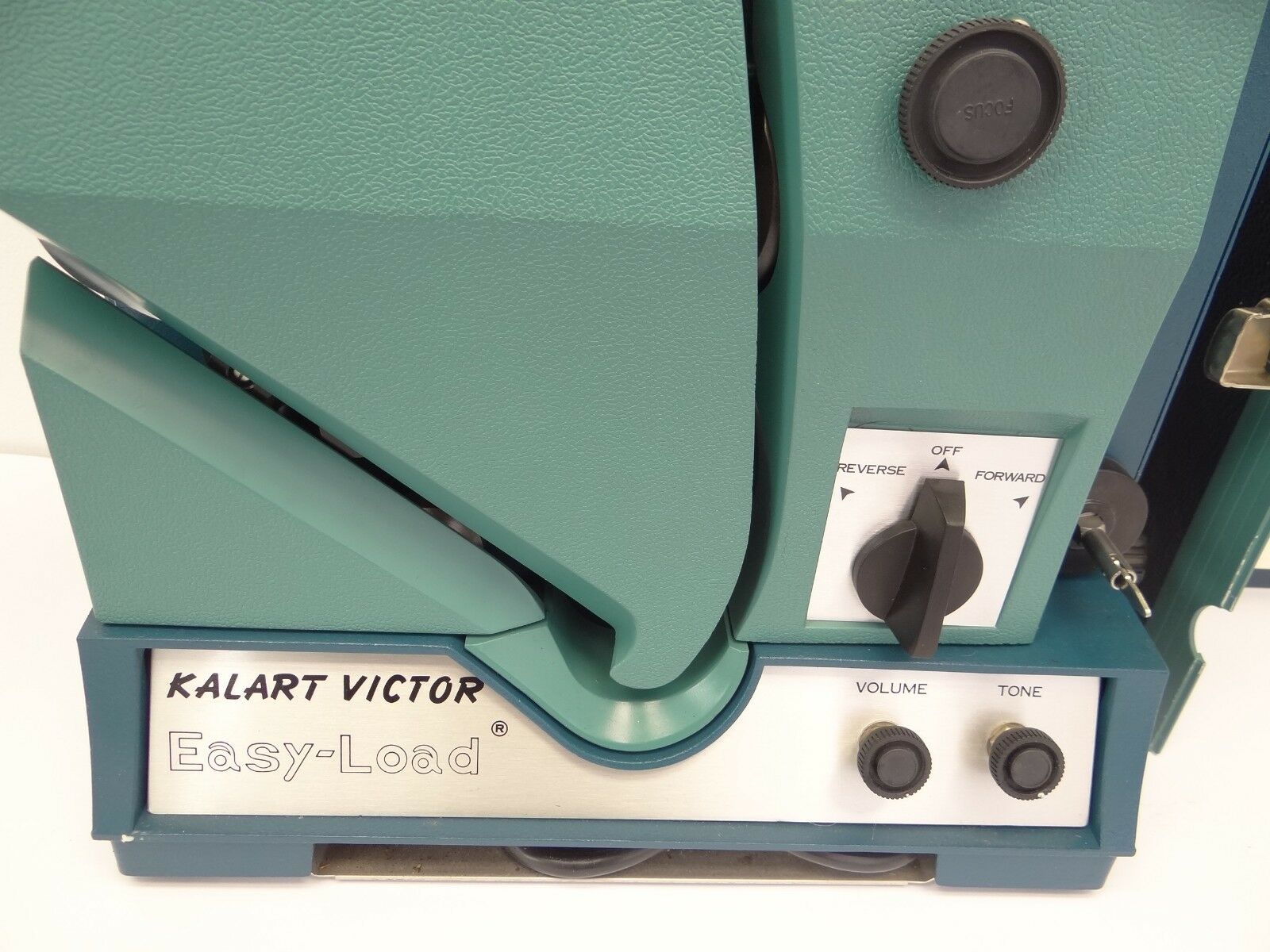
Here's a closer view of the Easy-Load's film track. The Easy-Load model simplified threading. All you had to do was slip the film into the curved track opening. I believe this was Kalart's Model 90 projector.
Besides the self-threading projector, Kalart also made a 16mm continuous loop projector. I actually saw a working unit in the factory but I never saw one in the field or in any advertising. It's possible the unit I saw in operation was a prototype. This projector had a plexiglass platform on the top instead of arms for the supply and take-up reels. Inside the plexiglass housing, the film was placed flat in a configuration much like an 8-Track audio tape cartridge. The film was pulled out from the center of the spool as the film spool was rotated, fed into the projector, returned to the plexiglass platform and allowed to wind back around the outside of the spool. As such, the movie never ended and the film did not have to be re-wound. This projector was found in applications such as trade shows and real estate showings.
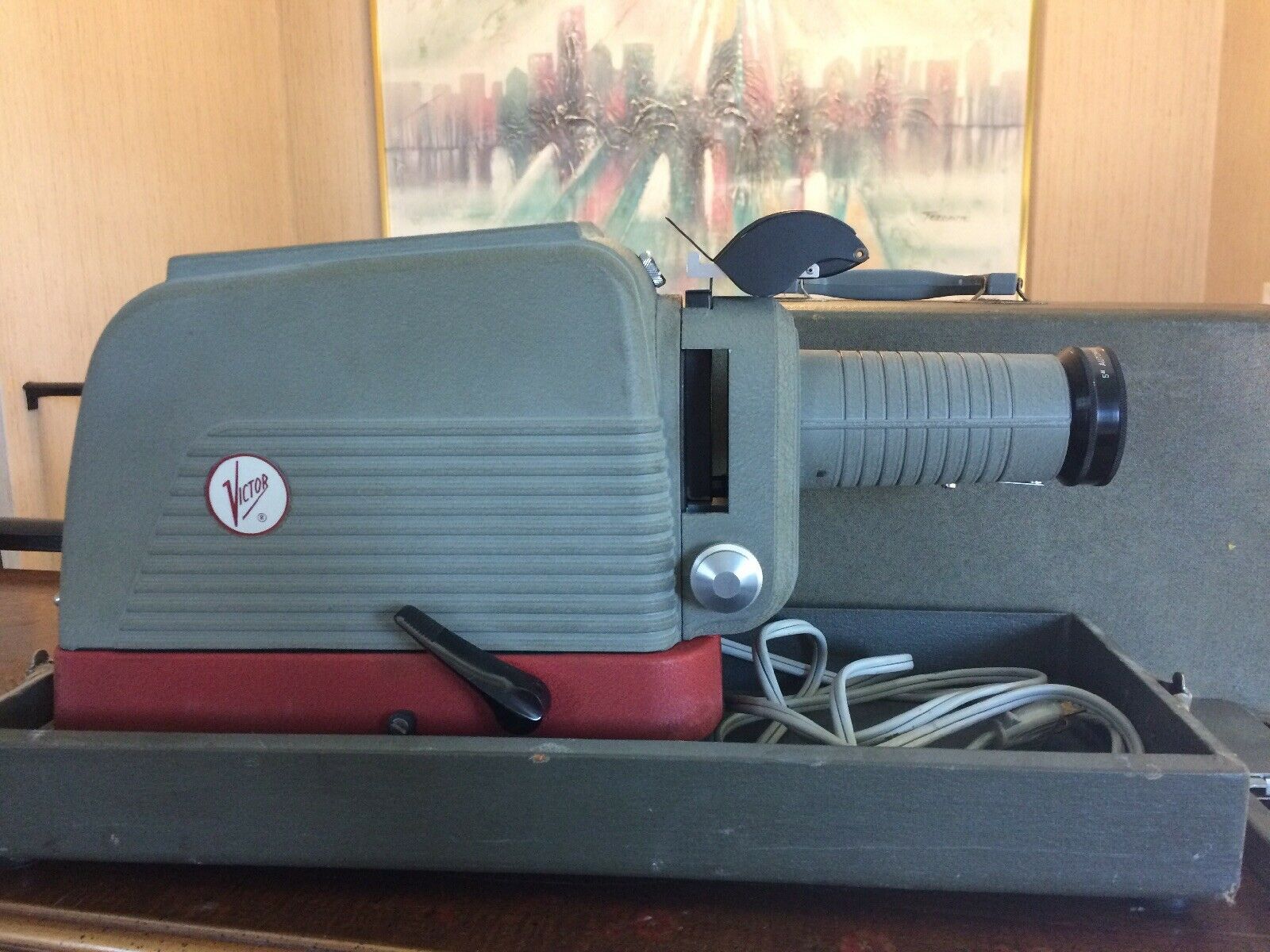
Kalart manufactured a line of 35mm filmstrip projectors under the Soundview product name. Often, the “sound” part of Soundview was an accompanying phonograph. The audio track of the presentation would come from a phonograph record while the film was displayed and manually advanced on the screen. The cue to change to the next film frame was an audio beep on the record. My dad's assembly line made these projectors and phonographs.
The projector shown in the above photo was a manual-feed version. The long black lever on the side is the manual advance lever used to move the film to the next frame. Kalart made an electric feed version of this projector. That model had a pushbutton switch on a long wire. Pushing the button operated a powerful rotary solenoid that advanced the film to the next frame. This allowed a person doing a presentation to stand near the screen away from the projector and stil be able to advance the frames.
Click Here for a PDF of a brochure from 1960 that shows the various Soundview models including one with the photograph. From the informaton on this document you can see that the Soundview line of filmstrip projectors originated with the Victor Anamatograph Corp. The document shows a model which came with a phonograph built into the carrying case, a model with the manual advance lever and a model with the remote push button advance.
One interesting Kalart patent was for adding a sound track to 35mm film by including the audio on a magnetic coating within a frame on the film. That means the audio frame would alternate between the photographic frames. Odd frames would be film. Even frames would be audio. The patent I read was for a magnetic recording. When I was young, I thought I remembered seeing the audio frame as an optical sound image much like a 16mm sound track but instead of one linear sound track on the edge of 16mm film, the audio tracks on the 35mm frame were in rows like sentences on a page. I could not discover much more about this technology.
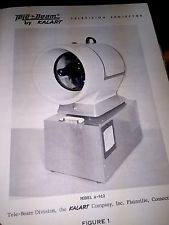

Kalart manufactured a black and white projection television called Tele-Beam. They were probably among the first companies to bring a projection television to market. This product was essentially a regular TV on steroids.
In those days, broadcast television in the US used the NTSC analog format. The image was created on a cathode ray tube by writing the image on a phosphor screen using an electron beam. The picture was made using 525 lines of video information. The Tele-Beam Projector used a bright CRT to project the image on a screen. If you stood close to the screen you could acutlaly count all 525 lines.
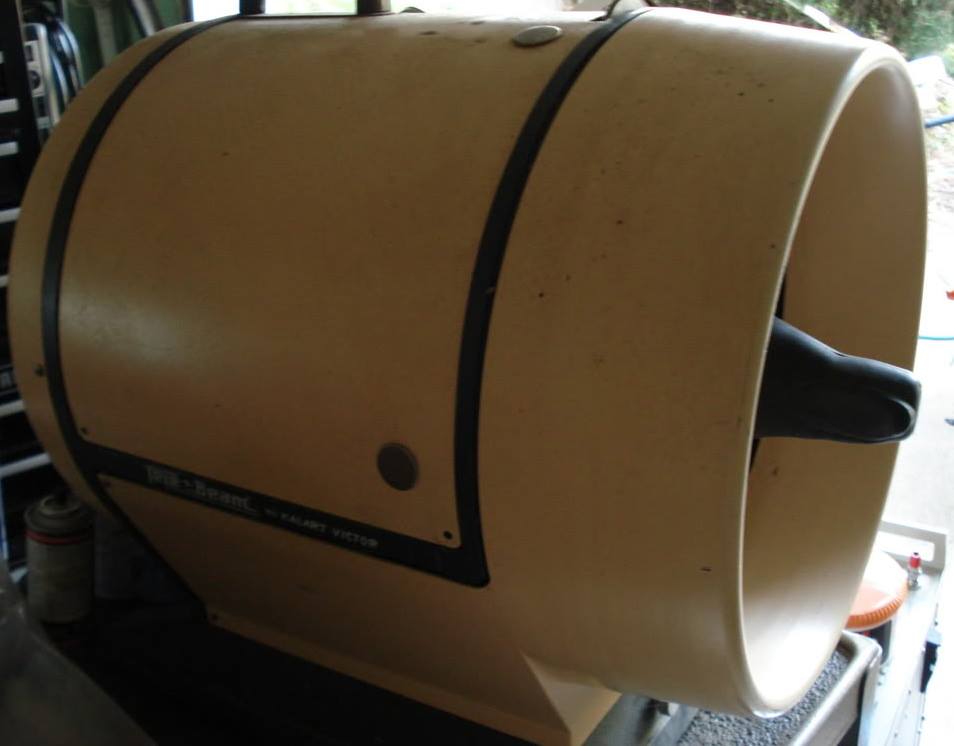
An interesting aspect of the Telebeam projection TV was that it did not use a projection lamp like today's computer projectors. The screen illumination came from a very bright 5AZP4 cathode ray tube (CRT) pointed at a concave mirror. These were contained in the upper half of the 2-piece Telebeam product. The cathode ray tube was supplied with a very high voltage to produce a super-bright image that was strong enough to be viewed on a projection screen up to 9 by 12 feet large. In this picture you can see the rear neck of the tube protruding out the front of the unit that faces the screen. The CRT screen faced inward towards a concave mirror which reflected the light outward. The phosphor in the 5AZP4 is highly cancerous. It contains beryllium oxide powder. Beryllium oxide was added to permit the phosphor coating to glow very brightly and not burn out from the strong electron beam. Because of the very high voltage required, these CRTs generated a high level of X-Rays. The Telebeam emitted a higher level of X-Rays with the covers removed.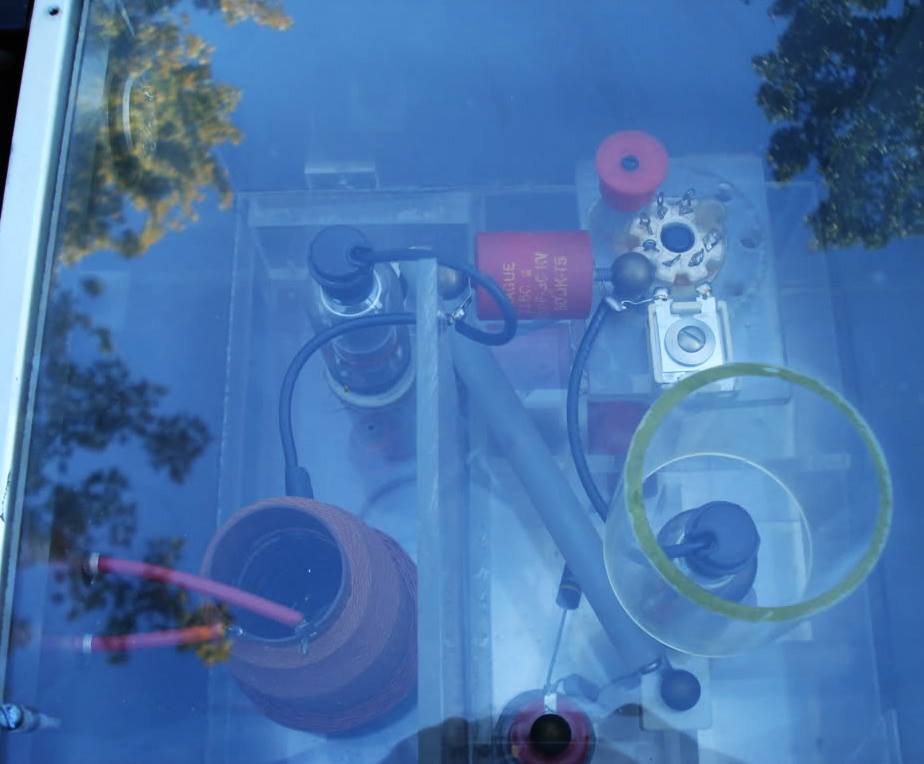
Here is a picture of the inside of the High Voltage section of the Telebeam. This was located in the lower half of the two-piece unit. This photo must have been taken outdoors. The blueish glare in the photo is caused by the outdoor blue sky reflecting off the clear Plexiglass cover on top of the chassis. This cover has a dual purpose. It insulates the various components to prevent high voltage arcing. It also provides safety protection to nosy or uneducated adventurers who may find themselves exploring an operating Telebeam. When running with the metal covers removed there would be a dangerous level of X-Ray exposure coming from those vacuum tubes. The tubes appear to be similar to 1B3 high voltage rectifier tubes. I wonder if this was a voltage-doubler configuration.
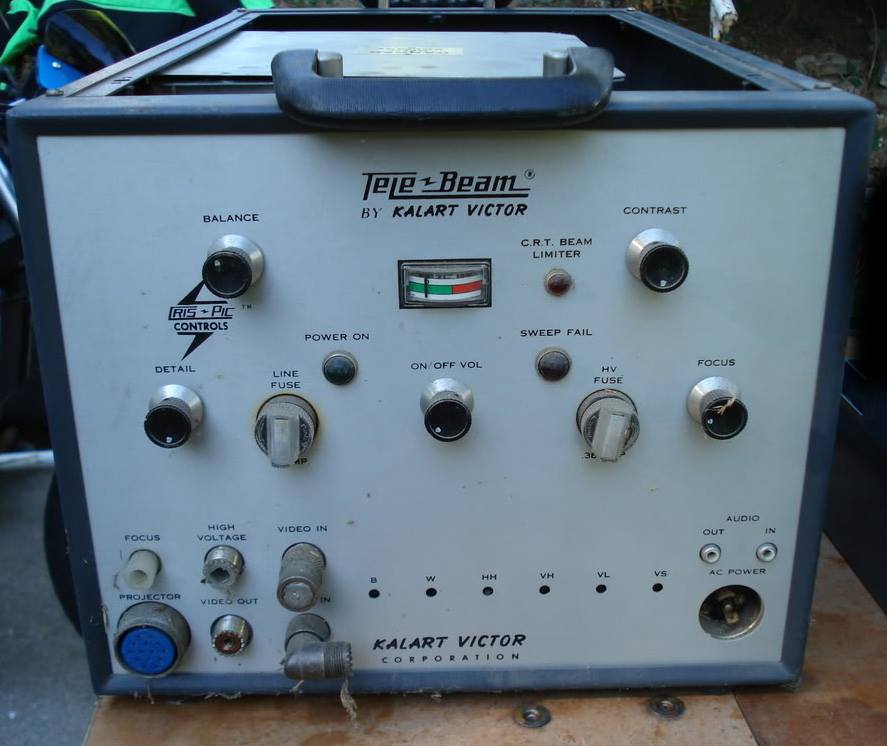
Tele-Beam had a standard over-the-air NTSC TV tuner also with baseband video and audio inputs and outputs. The photo above is the lower part of the 2-piece product. The model in the photo does not seem to have the TV tuner.
Notice the "Cris-Pic Controls" for Balance and Detail. At the time, this was a sophisticated way to improve the detail of the video signal. The horizontal resolution of the video signal was enhanced using a delay line. Remember, the old NTSC TV Standard scanned 525 lines of varying brightness on the CRT screen. By delaying a video line and then subtracting it from the current line, it effectively canceled out certain frequencies and enhanced the image.
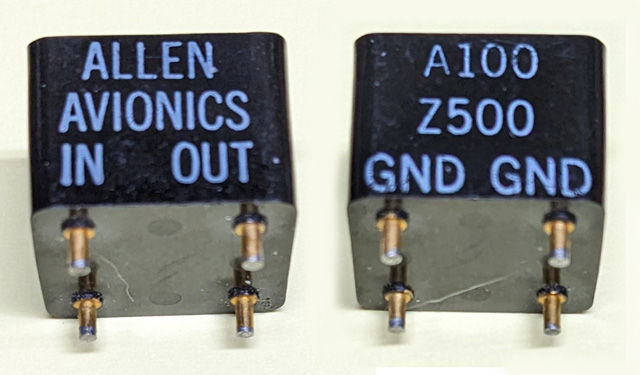 |
Front and back view of the delay line used in the Kalart Cris-Pic video enhancer circuit. |
Kalart actually made a stand-alone Cris-Pic accessory box that could be used with other video equipment. I actually have one of the delay lines, shown above, that my dad obtained for me when I was in high school. I intended to build one of these Cris-Pic devices from scratch. The delay line was the only part I could not source locally. I still had this delay line in my junk box of parts. This one was made by Allen Avionics. I was not able to reference the A100 and Z500 markings although A100 might be a 100 ns delay and Z500 might be the impedance.
Golf-O-Mat
Another interesting product I remember my dad talking about was the Kalart Golf-O-Mat. This was an indoor golf simulator. The player would hit the ball at a screen showing a view of the fairway. Depending on how hard the ball hit the screen the projector would advance the film in the projector to the corresponding view of where the ball would have landed. This was a very crude simulation and obviously done before the age of computers.
Leonard J. Quartin - President
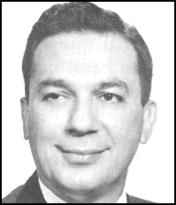 Another distinguished and influential person responsible for Kalart's long-term success was Leonard J. Quartin. Born in 1920 in New York City, he received his B.S. degree in Mechanical Engineering from the Polytechnic Institute of Brooklyn. Directly out of college he began working at Kalart Victor Corp. When Kalart moved from Stamford, Connecticut to Plainville, Connecticut, Leonard was appointed plant manager, responsible for all operations necessary for the production of its photo products. In 1957, he was elected vice president of Kalart Victor Corp. As a result of his leadership in the export market, Kalart sold its product in over 100 countries throughout the world and received the U.S. Department of Commerce Excellence Award. In 1967 Leonard was appointed President of Kalart Victor Corp. He was appointed to the CT regional Export Expansion Council, a Member of the American Society of Tool Engineers, the Society of Motion Picture and Television Engineers and had served on the board of the National Audio-Visual Association and the National Association of Photographic Manufacturers. He continued in the position of president until his retirement in 1990 after 53 years of service at which time Kalart closed its doors. Leonard Quartin passed away in 2010.
Another distinguished and influential person responsible for Kalart's long-term success was Leonard J. Quartin. Born in 1920 in New York City, he received his B.S. degree in Mechanical Engineering from the Polytechnic Institute of Brooklyn. Directly out of college he began working at Kalart Victor Corp. When Kalart moved from Stamford, Connecticut to Plainville, Connecticut, Leonard was appointed plant manager, responsible for all operations necessary for the production of its photo products. In 1957, he was elected vice president of Kalart Victor Corp. As a result of his leadership in the export market, Kalart sold its product in over 100 countries throughout the world and received the U.S. Department of Commerce Excellence Award. In 1967 Leonard was appointed President of Kalart Victor Corp. He was appointed to the CT regional Export Expansion Council, a Member of the American Society of Tool Engineers, the Society of Motion Picture and Television Engineers and had served on the board of the National Audio-Visual Association and the National Association of Photographic Manufacturers. He continued in the position of president until his retirement in 1990 after 53 years of service at which time Kalart closed its doors. Leonard Quartin passed away in 2010.
Kalart had a long-standing reputation for valuing its customers. One Kalart customer commented that he had the good fortune of purchasing a Kalart projector directly from Leonard Quartin at the factory in Plainville, CT. He said that Leonard was a soft spoken, well-educated gentleman who cherished his clients as friends. Leonard was a leader in customer satisfaction.
Kalart marketed its products worldwide. Their customers included the federal government, the military and public school systems.
When Kalart closed, the New Britain Herald and Hartford Courant printed stories about Kalart’s history featuring Leonard Quartin displaying many of Kalart’s products.
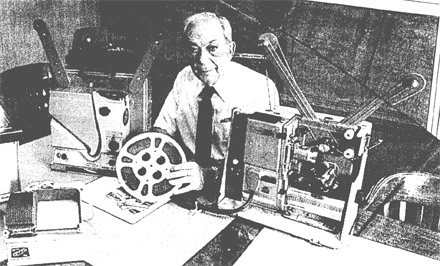 Click Here to read these newspaper stories of Kalart's closing. Unfortunately these are scans of photocopies from my dad and do not have the newspapers' dates.
Click Here to read these newspaper stories of Kalart's closing. Unfortunately these are scans of photocopies from my dad and do not have the newspapers' dates.
To Leonard’s credit, the company went out of business with dignity. They did not go into bankruptcy. Provisions were made for former customers to have access to parts and service.
It was impressive that the president of a relatively small company was so well-connected with national and international organizations related to the company products and initiatives. In those days, TV stations were using film projectors to broadcast motion pictures. Kalart had a projector that could be used in a film chain at a TV station. This was a configuration where the projector pointed directly into the TV camera. The projector needed to have a variable brightness projection lamp to provide the best image for the camera's Vidicon Tube. It was not surprising that Leonard had the vision and saw the value in being a member of the Society of Motion Picture and Television Engineers (SMPTE).
I could not find much about Kalart's TV Film Chain procucts. In Broadcast Engineering from 1971, the publication had the following.
New Model 0M -300 Multiplex TV Film Chain by Kalart Victor Corporation, Plainville, Connecticut, has Maxi -Media capability in that either 16mm movies, 35mm filmstrip, or 2 x 2 slides can be projected for television from its input stations.
One station is used for the TV camera. In use, either of its inputs can be put "on line" instantly. Optical transfer time is only 175 milliseconds maximum, and audio transfer is accomplished simultaneously with the picture.
A typical combination of equipment used with the Model 0M -300 may include two Kalart Victor Model STV -TB 16mm TV projectors, a Kalart Victor Model PS -65 TV combination filmstrip and slide projector, and a model VR -622 TV camera.
I met Leonard Quartin once as a youngster. I remember his kind disposition. My dad told Leonard of my fascination with electronics. Occasionally Leonard would offer my dad a surplus electronic item from the factory's attic storage room to take home for me. There was an electronic technician who worked in the design lab. I think his name was Jean Dupuis. He would save outdated electronic reference books and magazines for my dad to take home for me. This further accellerated my interest in electronics as I was reading about advanced topics I would later learn in college. When I began my career at Kodak I subscribed to most of these same trade journals I read as a kid.
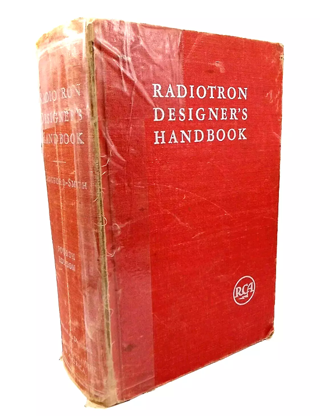
I still have a copy of the RCA Radiotron Designers Handbook that he gave me. These handbooks are still selling for over $30 on Ebay and over $100 used on Amazon.
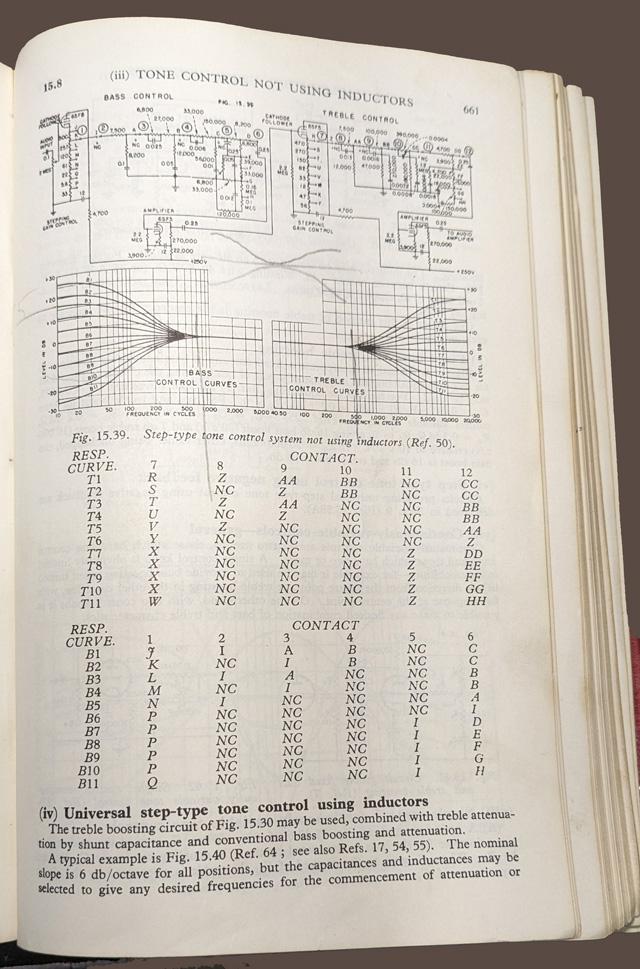 |
Here is a page out of the Radiotron Designers Handbook about Tone Controls. When I was in high school I would clone a Kalart projector amplifier for use in my homebrew stereo system. In trying to enhance the performance I would turn to this handbook for suggestions for improvement. Here was one of the pages on tone controls. You can see I even drew the loudness curves of the Bass and Treble controls in pencil. This handbook covered everything from microphones and speakers to AM and FM radio design and antennas. Of course, it was all using vacuum tubes. Much of it was over my head at the time but it was easy to just copy the designs from their schematic diagrams. It was from this manual that I learned about things like permeability tuning found in car radios of the time and the difference between volume controls and loudness controls. The copy of this manual that I have is the Fourth Edition 1952 and was printed the year I was born in 1953. The First Edition was printed in 1934.
|
Here are some other people who worked at Kalart.
Don Ruli - Plant Manager
 Don Ruli worked at Kalart Victor for 20 years. He was the Plant Manager and Plant Control Manager. At the same time, Don attended the University of Hartford evening classes for eight years. He served in the US Air Force, Strategic Air Command, during the Korean Conflict from 1952-1956. He was nominated Airman of the Month and was acknowledged for designing and implementing numerous techniques to better service the B-47 aircraft.
Don Ruli worked at Kalart Victor for 20 years. He was the Plant Manager and Plant Control Manager. At the same time, Don attended the University of Hartford evening classes for eight years. He served in the US Air Force, Strategic Air Command, during the Korean Conflict from 1952-1956. He was nominated Airman of the Month and was acknowledged for designing and implementing numerous techniques to better service the B-47 aircraft.
Robert Jean-Marie Valliere - Electronic Technician
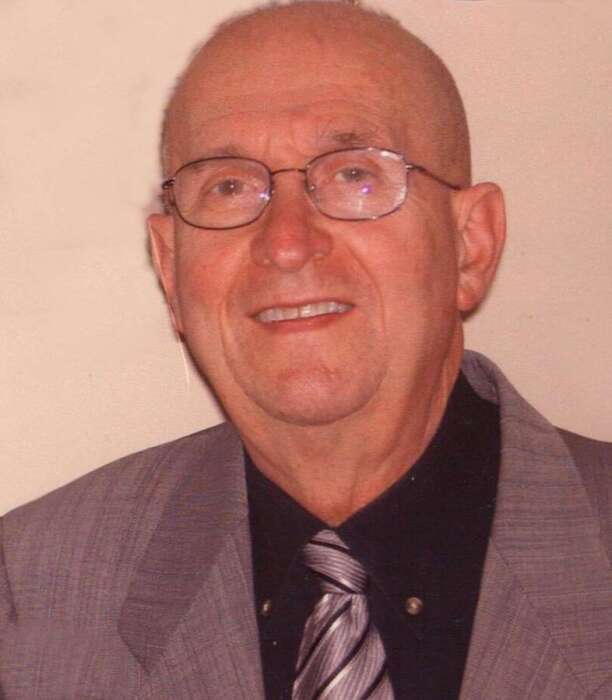 After earning an Electronic Technician degree from the University of Hartford, Robert Valliere spent most of his 38 year career working as an electronic technician at Kalart Victor. He was an Airman First Class in the United States Air Force working as a Radio Radar Technician.
After earning an Electronic Technician degree from the University of Hartford, Robert Valliere spent most of his 38 year career working as an electronic technician at Kalart Victor. He was an Airman First Class in the United States Air Force working as a Radio Radar Technician.
Norman Larson - Head of Production Control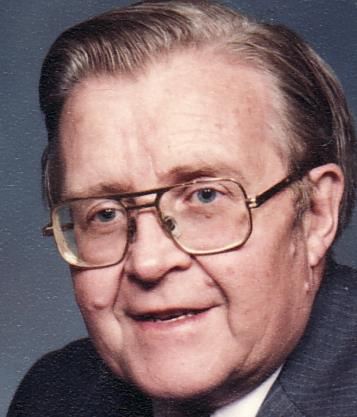 Norman Larson was a graduate of Central Connecticut State University where he received his bachelor’s degree in Business Management. He was head of production control for 35 years. He served his country honorably in the US Army during WWII.
Norman Larson was a graduate of Central Connecticut State University where he received his bachelor’s degree in Business Management. He was head of production control for 35 years. He served his country honorably in the US Army during WWII.
Henry Swenton - Supervisor
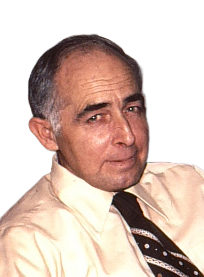 My father, Henry Swenton, worked at Kalart Victor Corp. for 41 years from 1948 to 1989. He was a supervisor of an assembly line. As I recall, his assembly line primarily made the Soundview line of 35mm filmstrip projectors and probably made 8mm editors.
My father, Henry Swenton, worked at Kalart Victor Corp. for 41 years from 1948 to 1989. He was a supervisor of an assembly line. As I recall, his assembly line primarily made the Soundview line of 35mm filmstrip projectors and probably made 8mm editors.
Henry might have been the last Kalart employee. He retired just as the factory closed. Right after retirement he was called back to the factory to oversee the dismantling of manufacturing equipment for relocation to a company in upstate New York who purchased the assets from Kalart. The new company flew Henry to the new factory for a week to oversee the re-installation of the equipment and to re-establish the assembly lines. I don’t recall hearing anything further about audio-visual equipment coming from this new company.
Henry was a U.S. Army veteran of World War II and was a decorated member of the 4th Armored Division of the 3rd Army serving under Gen. George Patton. Henry was awarded the Purple Heart for being wounded in action while rescuing a fellow soldier from a burning tank.
Kalart Patents
Along with Morris Schwartz, the names Roger W. Coomer, Ray L. Marquis and Frank H. Beckman appeared on many of the Kalart patents.
My Personal Experience with Kalart
Of the people I mention in this writing I have only met company president Leonard Quartin. I was youngster at the time. The other names in this writing were those mentioned by my dad as his co-workers and friends.
My dad would occasionally work a few hours on Saturday mornings to earn some overtime. He was an assembly line supervisor. As a supervisor he was never afraid to do mundane tasks like sweeping the floors and emptying the trash. On Saturdays he would prepare the assembly line to start up on Monday mornings. He would also catch up on any production deadlines by assembling products himself so they could meet a Monday shipping date.
There were several times my dad would bring me to work on Saturdays. I was in grade school at the time. My visits would depend on his workload and how much production activity would be happening. I got to see up-close the many Kalart products in various states of assembly. I loved these visits.
During one of my visits I was around 12 years old. My dad had to finish assembling six filmstrip projectors so they could be shipped out on Monday morning. The final assembly was to wire the power cord and switches to control the fan and projection lamp. He left me at the bench to go get a coffee. He got sidetracked talking to another employee at the coffee machine. When he returned I had completed the wiring of the five remaining projectors just as I saw him do on the first one. Now all six were fully assembled and ready for shipping. He had a melt-down. I explained that it was a simple task and I performed it exactly as he had done on the first one. I couldn't understand why he was upset until he explained, "What do you think would happen to my job if someone found out that I allowed a child to assemble projectors on our production line?" In retrospect, my response, "They might want to hire me?" was the wrong answer!
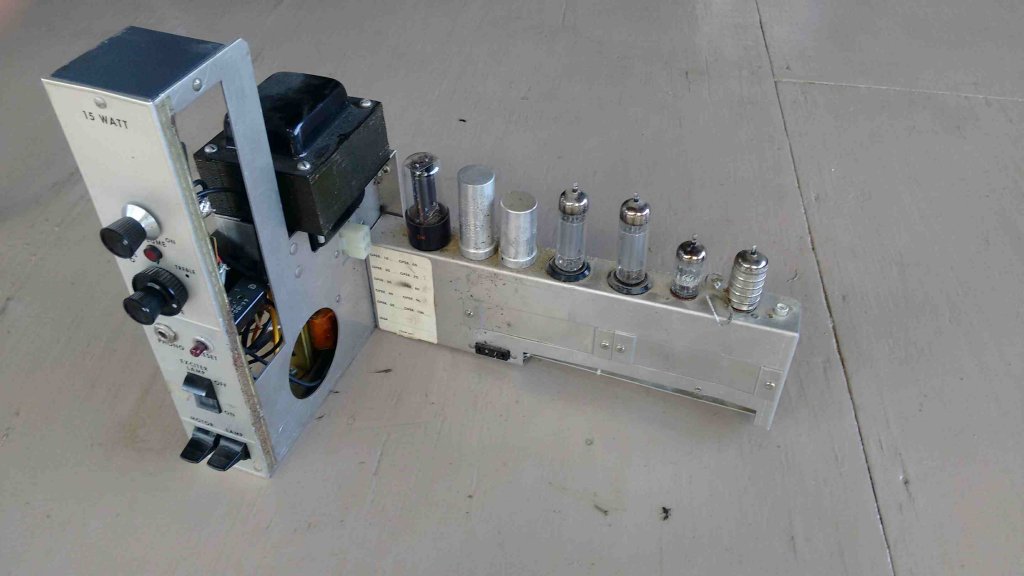
My favorite part of visiting the factory was seeing all those amplifiers for the16mm sound movie projectors lined up on the benches being burned-in for reliability testing. In the 1960s they used vacuum tubes. There was a distinct electronic smell in the air from the glowing tubes and heated varnish in the transformers.
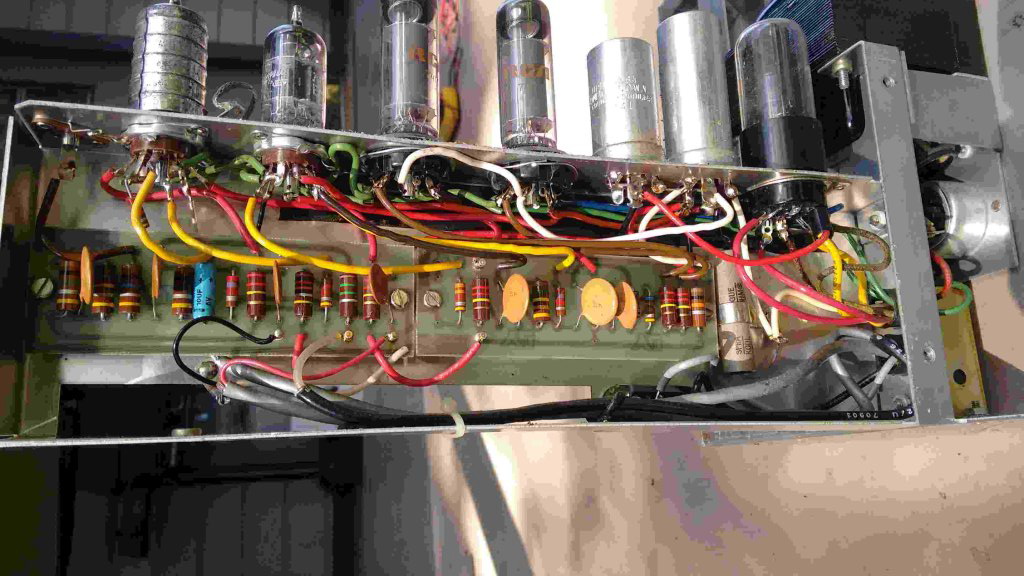
Here is a rear view of the amplifier showing a combination of point-to-point wiring along with very basic printed circuit board designs.
Kalart used a solid, industry-standard amplifier design. Their amplifiers produced modest and clean power with excellent fidelity.
 |
A pair of 6973 tubes was used in the output stage of the 15 watt amplifier. These tubes were designed by RCA to be a proprietary replacement for the EL84. They are more robust, run at a higher plate voltage and have a reputation of providing a warmer and more faithful audio reproduction. They were used in many guitar amplifiers of the day. Many musicians can tell the audible difference between the various types of output tubes. Some companies chose a less-expensive alternative such as the 6BQ5. |
Just like the great Fender guitar amplifiers of the day, the Kalart amplifiers used the Class AB1 push-pull design in the output stage. These amplifiers were efficient and operated with low distortion. They produced a warm sound associated with tube amplifiers appreciated by musicians and audiophiles.
If you look closely at the tube sockets for the 6973s you will notice that they are the same outer diameter size as ones for octal tubes. The amplifier shown above is the 15 watt version. There was a 25 watt version of this amplifier that used 6L6 output tubes. Those would have required octal tube sockets in these positions. The 6973 tubes used in the 15 watt version required a 9-pin miniature tube socket. To avoid changing the hole dimenstions in the aluminum chassis, they simply specified 9-pin sockets with the larger outer diameter to fit the existing hole so the larger hole could be used for both versions of the amplifier.
You may notice the color-coded wiring. White was for ground. Red was for B+. Yellow was for signal. Green was for the tube filaments.
 |
The driver stage uses the standard 12AX7 tube. Many companies woud have also used the 12AX7 as the preamplifier. Kalart chose the more expensive 7025. The 7025 was considered to be a more rugged version of the 12AX7. It also had lower noise level than the 12AX7. This was the main reason to use it. |
On movie film, the sound track is "photographed" on the edge of the film while the movie is being made with the camera. The sound track is an optical representation of the audio. Think of the grooves in a phonograph record. These are a mechanical representation of the sound. On film, the bright and dark changes in the film's sound track are an optical representation of the sound. The image is photographed on the edge of the film by a light source (lamp) where the brightness of the lamp is modulated by the incoming sound.
In projectors, the sound track is read off the edge of the film by a photoelectric cell illuminated by an exciter lamp. From an audio amplifier perspective, taking an audio signal from the photocell is similar to taking an audio signal from a microphone or phonograph cartridge. The signal is very low in amplitude so the amplifier needs to make it stronger. The signal is very weak and subject to interference from background noise. The amplifier will amplify the signal plus the noise. This noise could come in from poorly shielded cables, improper shielding of the photocell, electrical noise generated within the projector and even from electromagnetic fields in the room from nearby motors, electric equipment and even radio signals. Vacuum tubes introduce noise themselves. This could best be explained as the faint background hiss you hear when you listen closely to a speaker connected to a tube amplifier that is powered on but not playing any audio. For example, if you turn up the volume on a tube amplifier when a phonograph is not playing a record you will hear the hiss increase in volume. This is probably the extra noise coming from the preamplifier stage and associated cables to the phonograph. In chosing the 7025 tube, Kalart ensured that the preamplifier stage had the lowest possible noise level. You will notice the metal tube shield on the 7025. This further eliminated noise pick-up.
Another consideration for tube choice is microphoncs. Microphonics happen when a tube is susceptable to generating noise from being mechanically vibrated. When the tube's elements vibrate, it changes the electrical characteristics of the tube. The vibration changes the audio signal being amplified. In essence, the tube becomes a microphone. If you bang on the tube you will hear the banging noise in the speaker. This is most undesirable in a projector since there is a lot of mechanical vibrations and noises going on in there. The 7025 tube was an excellent choice.
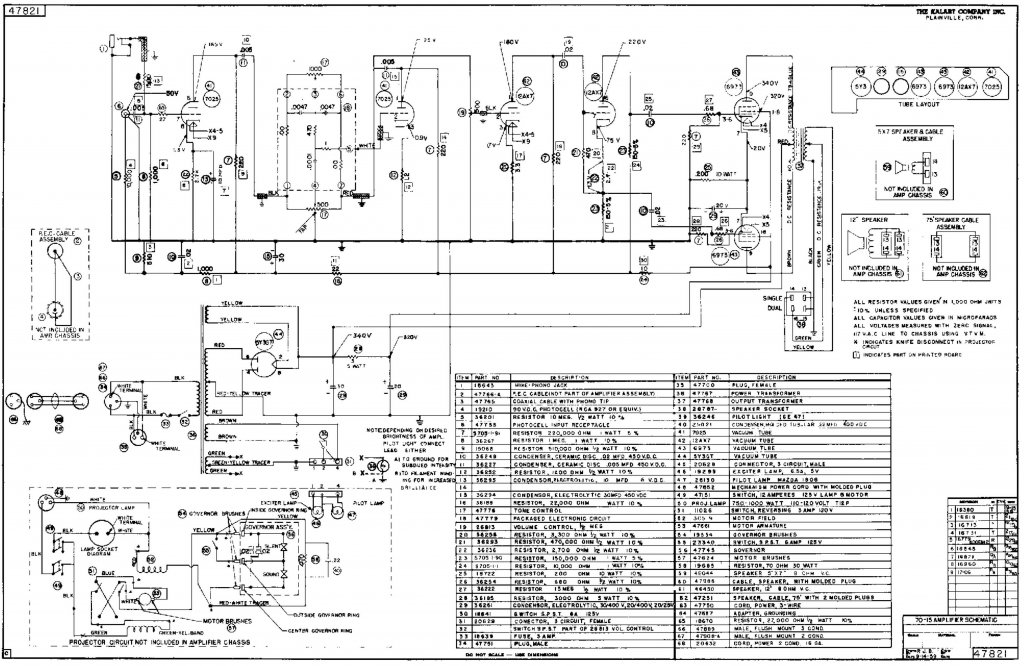
This is the schematic diagram of the 15 watt amplifier shown in the previous images used in the Model 75-15 projector shown below. From the schematic you may notice another electronic noise reduction technique. The filaments of the 7025 and 12AX7 tubes have their center taps grounded. They are also fed from a grounded center tapped winding on the transformer. Because the filaments are powered by AC there is the possibility that some AC noise could be introduced into the audio. By center-tapping everything to ground, a balanced system is created for the filaments AC. This provided a common-mode rejection that neutralizes any 60 Hz hum that might come from the filament power source. It also appears that the photocell exciter lamp is powered from the balanced filament power. Another great design. Kalart ascribed to all the industry best practices in their design and manufacturing.
Over time my dad would bring home various surplus amplifier chassis and parts. Eventually I would construct working amplifiers that became part of my personal stereo system. Playing in garage bands as a youth, I discovered the stark similarity between projector amplifiers and guitar amplifiers. I became the favorite repair person of my guitarist friends. When I became a Ham Radio operator I found similar amplifier designs within my transmitters. Instead of powering a speaker, the audio amplifier in a transmitter, called a modulator, varied the transmitter power output when a person spoke. This is how AM radio signals are created.
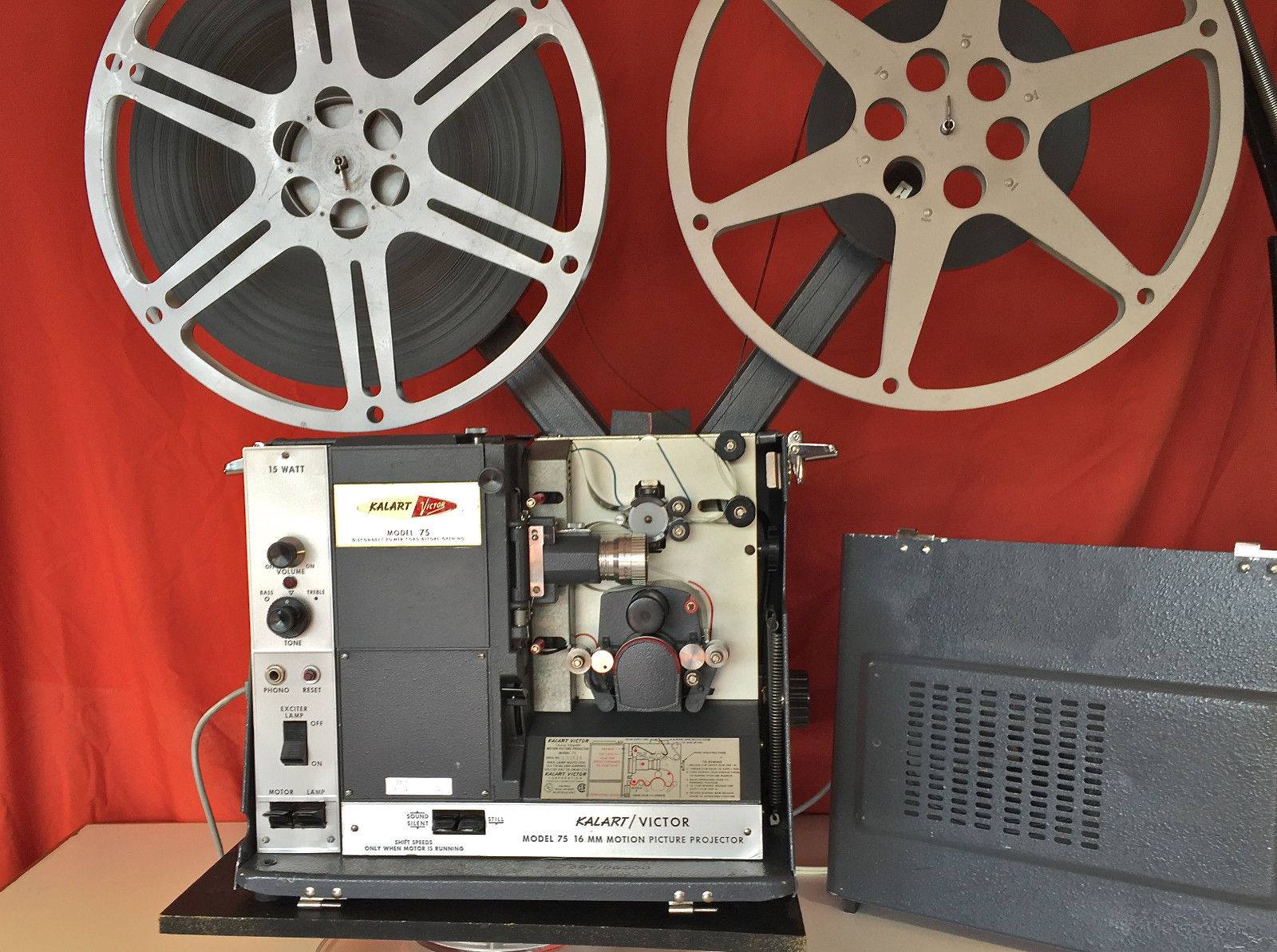
The Model 75 was one of the flagship 16mm projectors. The 6x9 speaker is in the removable cover. You can see the amplifier from the previous images installed on the left side of the projector. The L shape of the amplifier chassis allowed for the controls to extend to the front of the left side of the projector while the rest of the amplifier was spread across the rear of the projector.
Here are two YouTube Videos of a Kalart projector in operation. Video #1 Video #2
As you watch the videos, especially #2, you can hear a clicking sound and see the film chattering as it passes through the projection lamp and lens. Remember, motion picture film consists of a series of still photographs that are advanced 24 pictures (frames) per second to simulate a moving picture. In order to project a frame, the film has to actually stop moving for 1/24th of a second. If the film did not stop, the projected image would be just a blurred streak of lines on the screen. Because the film has to stop to project each frame you can see the film chattering as it moves through the projector. When the frame stops at the lens, the rest of the film can't stop. A tiny amount of film keeps heading towards the lens from the supply reel while a tiny amount of film is pulled away from the lens towards the take-up reel. That's why there are two loops of film above and below the lens. As the film stops for projection of the current frame, the upper loop will increase in height because the films keeps coming in and the lower loop will decrease in heigth because the film keeps going out. As you observe the supply and take-up reels they continue to rotate smoothly with no chatter.
Click Here to view the Model 70 Service Manual.
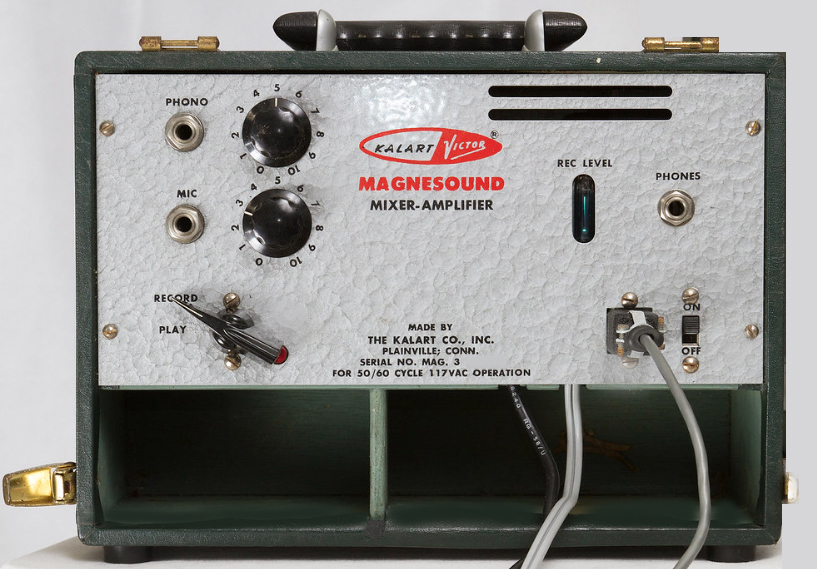
Here is an interesting device. The Kalart-Victor Magnesound device was an accessory that could be used with the Kalart-Victor 16mm Projector models 55 through 80. With the Magnesound you could purchase 16mm film with a magnetic stripe. After the film was exposed and developed you could record an audio track as the film was played on the projector and later playback this audio while the movie was being shown.
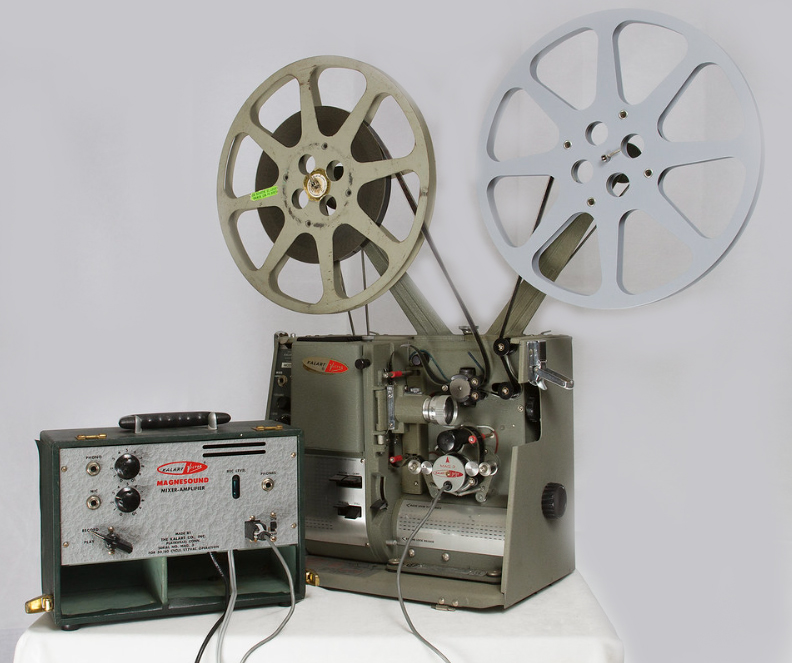
The Magnesound came with an assembly that replaced the projectors optical sound head (exciter lamp and photocell) with a magnetic sound head. You would plug a microphone or phonograph into the Magnesound. As the film was being shown on the projector you could record your speech and even music from a phonograph record onto the magnetic stripe on the film. The next time the film was shown the speech and music would be heard. Using film with a magnetic stripe, the Magnasound turned the projector into an audio tape recorder.
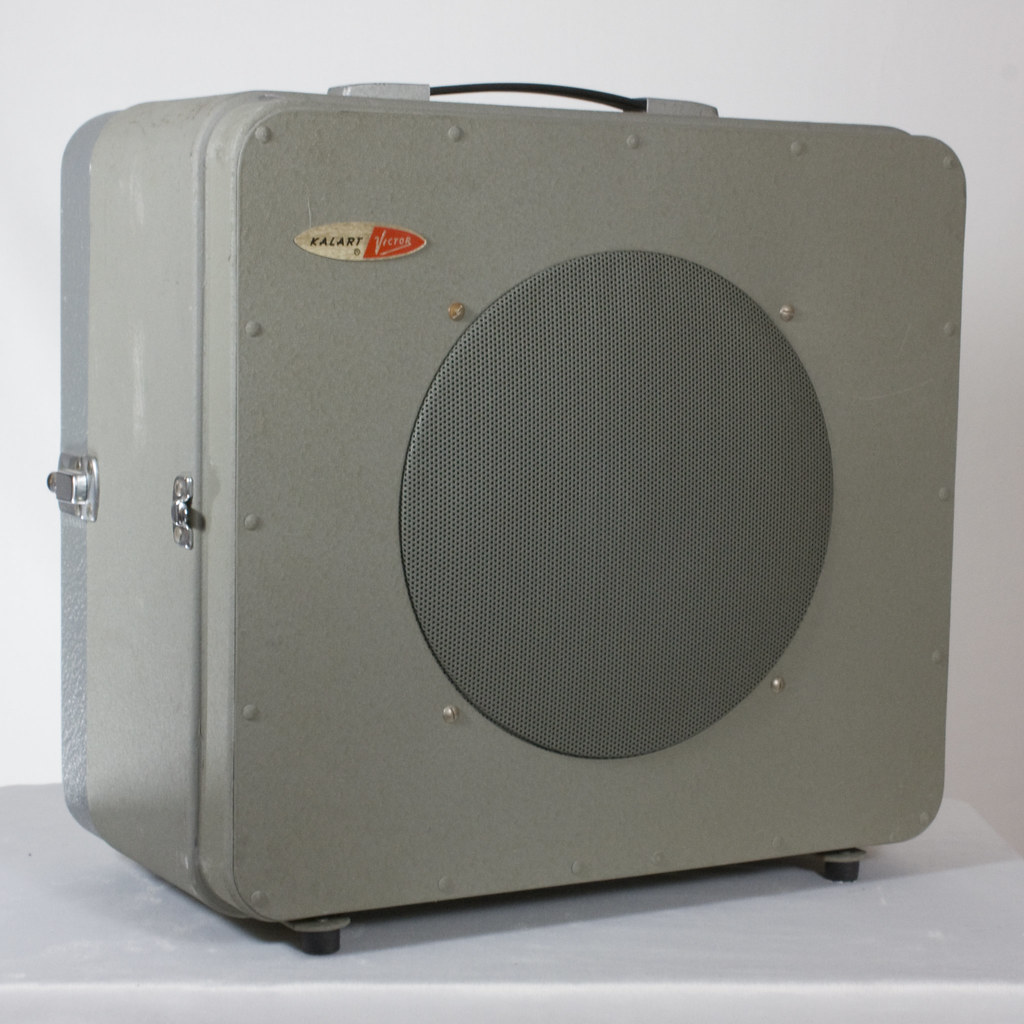
As an upgrade, Kalart offered this 12 inch high fidelity speaker in a nice, rugged cabinet. As I recall, the speaker element was a very high quality unit with a large magnet. The speaker elements were sourced from Jensen or Utah. This was a big improvement over the 6x9 speakers built into the projector's cover especially when used in an auditorium. As a fledgling audiophile I used one of these as the basis of my first home HiFi system.
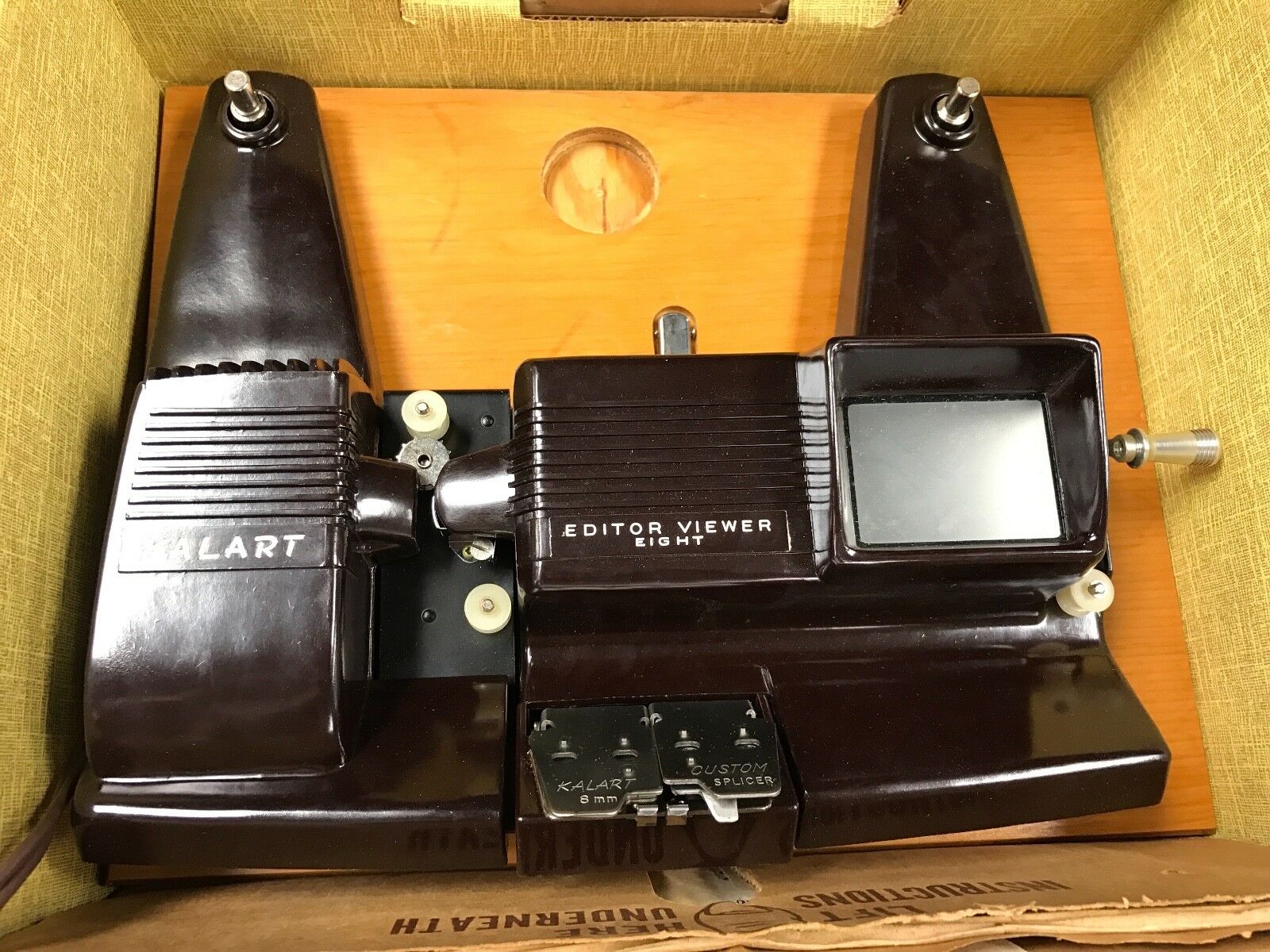
Here is one of the Kalart 8mm film editors. The original design had the editor mounted on a wooden base. The base was placed flat on the workspace and the editor pivoted upward at a 45 degree angle for viewing. The hand crank on the right is used to advance the film. The film splicer is seen in the lower middle. Remember, before computers and digital imaging, motion pictures were captured on film. To edit the video, one would actually cut a section out of the film and splice the ends together. That's what the splicer was for. The splicer had a cutter to cut the film. Then the two remaining pieces would be mounted to each side of the splicer. Ther was a retractable moving block that had a surface like a file. Moving the block back and forth across the leading edge of the film would grind off the emulsion so that the glue could take hold. A thin line of film cement would be placed on the film edge. When the other side of the splicer was closed, both pieces of film would be accurately joined together.
Here is a YouTube Video of a Kalart editor in operation!
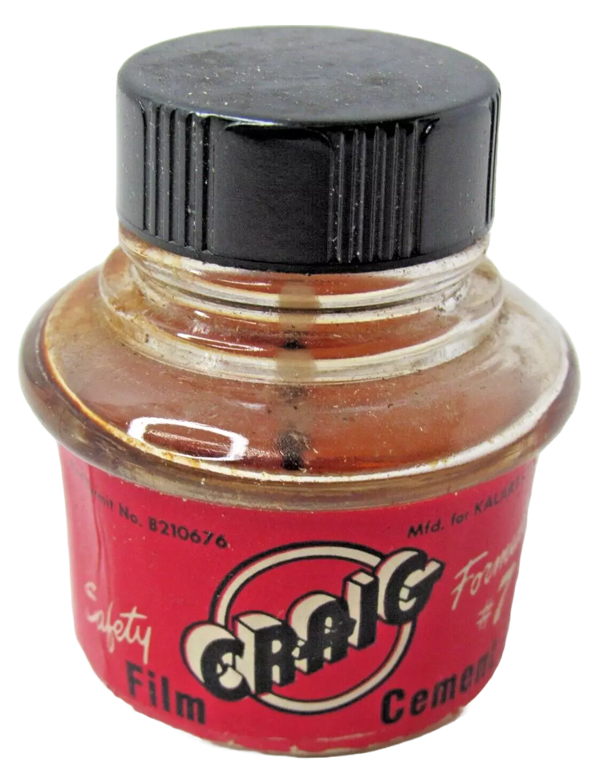
The round hole in the upper part of the wooden base was where the bottle of cement could be held. While this was called cement it was not actually an adhesive. The cement actually fused the two pieces of film together much like how PVC cement joins PVC pipes. The edges of the two pieces of film were "melted" together forming a strong bond.
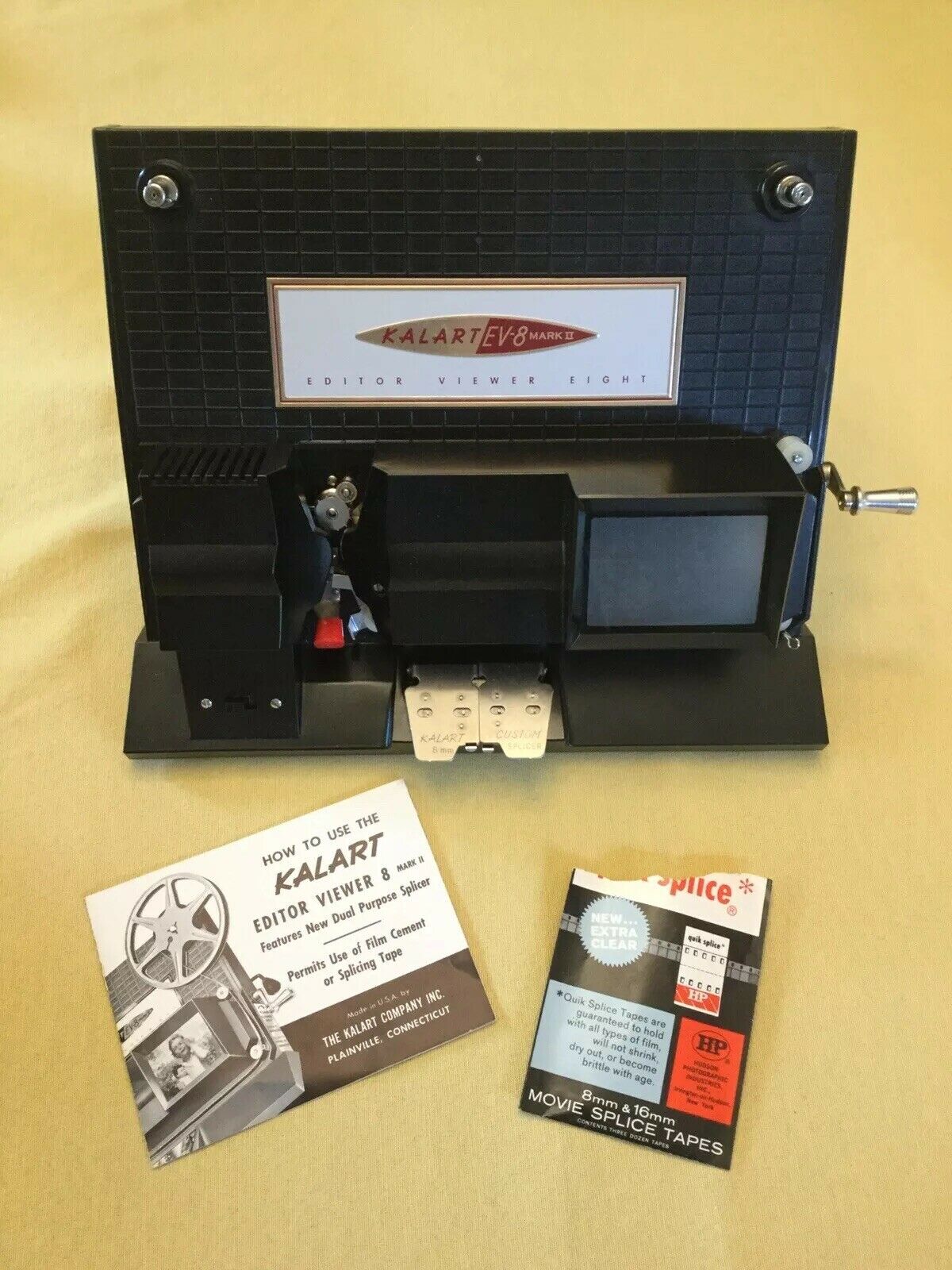
A later version of the editor was made without the wooden base. This provided a more modern and elgant look. Eventually, the Super-8 format replaced the standard 8mm film. Super-8 had frames with a larger frame size and better resolution over standard 8mm. This required new equipment design.
One of the neat designs of the Kalart editors was how they eliminated the shutter. The images on motion picture film do not actually move. They are sequential pictures taken very quickly as the subject is moving. In order to "play back" the film, the images have to be "flashed back to you" in sequence. In projectors, this is done with a shutter. Here's how it works.
- The projection lamp is blocked with the shutter (a plate)
- The film is moved into the aperature
- The film is stopped
- The shutter is opened to allow the light through
- The shutter is closed to block the light
- The the next frame of the film is moved into the aperature
- Jump to step 3 and repeat
As you can see, the film has to be stopped to display each image. This happens 24 times per second with 16mm film. If you did not close the shutter, the projected image on the screen would appear to streak or blur because it would be displaying the film as it was in motion between frames.
24 frames per second was chosen because of persistence in the human eye. If you chose a slower speed, the human eye would perceive annoying flickering of the image. If you chose a faster speed, the human eye would not notice an improvement and it would unnecessarily consume more film when making the movie with the camera.
Anyone who ever threaded a movie projector knows there needs to be a loop of film above and below the projection area at the lens. This is because the film needs to physically stop moving during projection of the frame. The film frame at the aperature stops but the rest of the film feeding into the projector from the supply reel and leaving the projector to the take-up reel does not stop at all. That means that the loops of film before and after the aperature are taking turns compensating for the still frame. The upper loop gets shorter while the lower loop gets longer. Then the upper loop gets longer while the lower loop gets shorter. The shortening and lengthening is only by the amount of the heigth of one frame on the film and it only lasts 1/24th of a second.
There is an interesting consideration about these film loops. For 16mm film, the optical sound track is recorded 26 frames ahead of the corresponding image frame. This is because the place where the projector "reads" the sound track is located after the place where the picture frame is projected. If the loops are too long or too short, the audio will be slightly out of synchronization with the picture. This would be noticeable when a person's lips are out of sync with their voice.
Kalart did not use a shutter or stop the film in their editor viewers. Instead, they used a square rotating glass block positioned in the aperature. The glass block rotatation was precicely synchronized with the film motion. The block position was fine-tuned so that when the flat part of the glass was parallel with and alinged with the current film frame that the image projected on to the screen was "framed" properly to the screen. There was no flicker with this system until you advanced the film very slowly with the hand crank. Even then, the flicker was a gentle transition and not unpleasant to the eye. It was very ingenious.
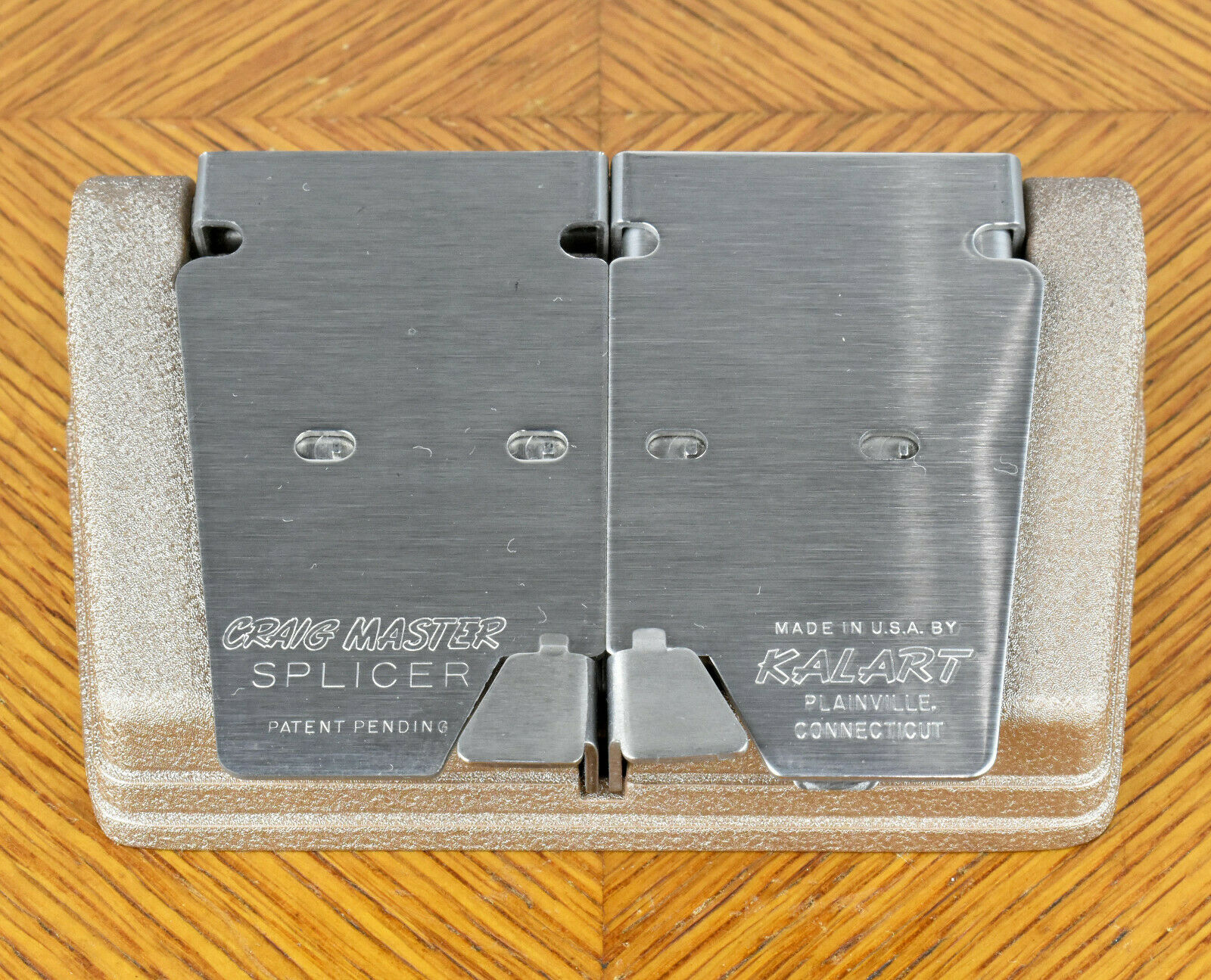
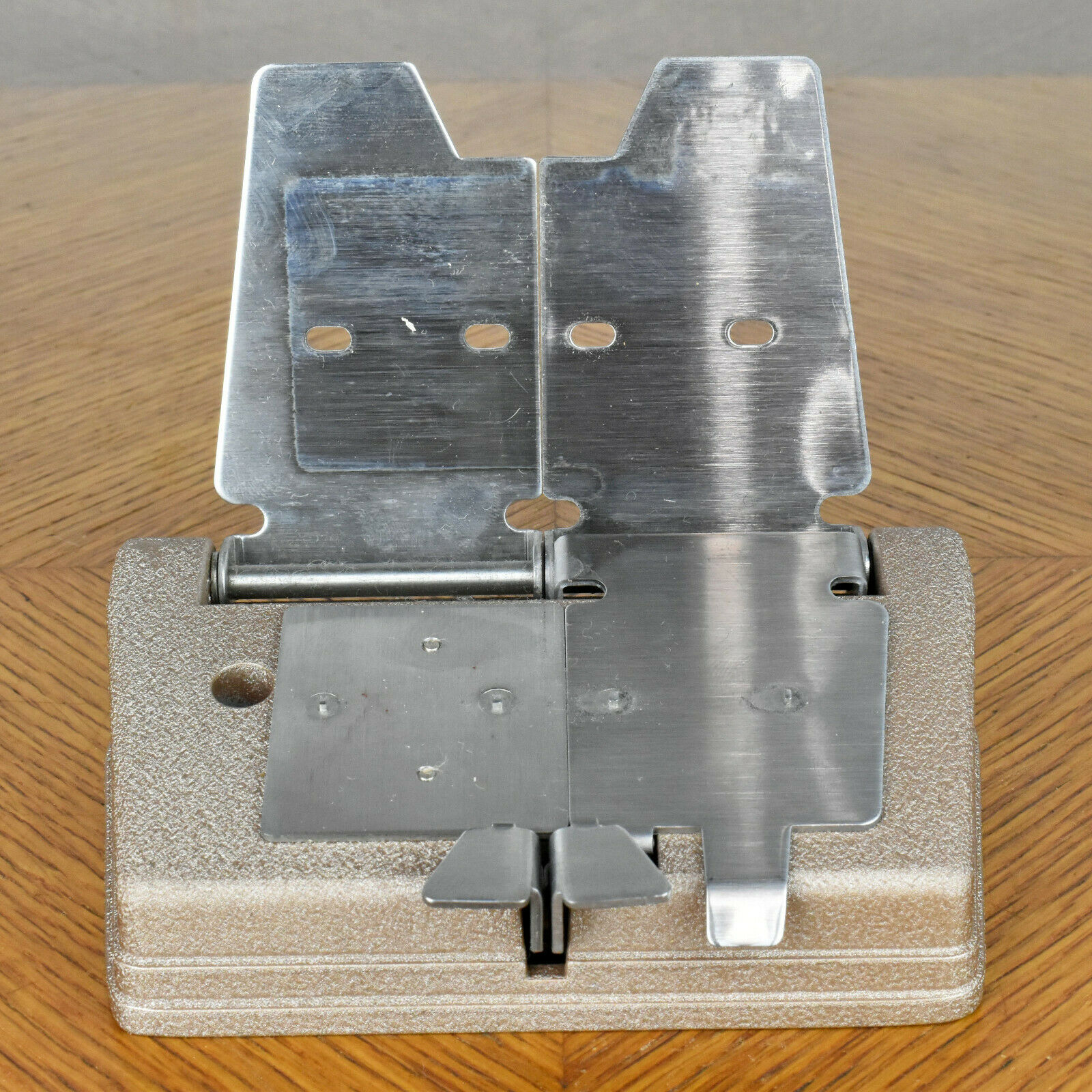
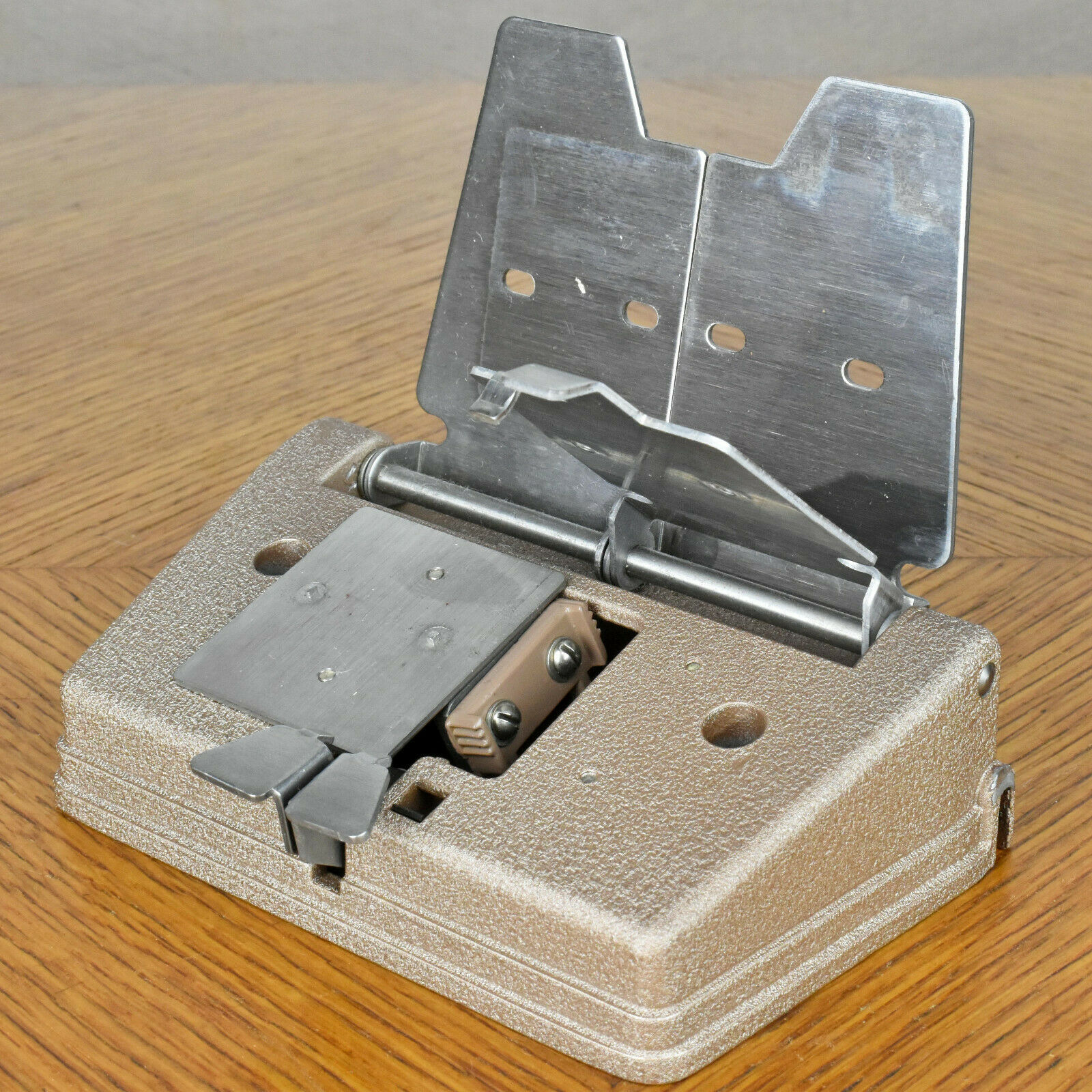
This is the Craig Master Splicer for 16mm film. Here's how it works. A section of film is clamped into the left side, emulsion side up, by closing the flap. On the right side, the inner flap is the cutter. It is lowered to cut the film that is clamped on the left. The film will be cut flush with the flap's metal edge. Next, the scraper is raised out of its hole in the base. Like a file or sandpaper, the scraper is rubbed back and forth on the short edge of the film that is clamped on the left to remove the emulsion. That is so the cement can bond to the film. Now the film clamped on the left is ready. The other piece of film is clamped between the two metal flaps on the right, emulsion side down. A fine strip if film cement is applied to the edge of the left film that is prodruding from the plate. When the right flaps are closed onto the base, the right film will be cut by the shearing plates and will be pressed onto the left film that has the cement. When the cement dries, the covers are opened and both pieces of film are joined. The splice is an overlap joint. I believe the chemical action of the cement is similar to what happens when cementing PVC pipe. The cement causes the two joining pieces of plastic film to "melt" together to form a permanent bond.
Kalart had a department that did painting and electroplating. Notice the wrinkle finish on the painted base of the film splicer in the photo above. That painting and baking took place in the factory. It is also likely the metal parts were electroplated in the factory as well. As with many manufacturing facilities of the time, this may have contributed to ground contamination. The contamination was not necessarily caused by painting or plating chemicals. Industrial manufacturing processes used other chemicals like oils and solvents. In 2000 the site was designated a Superfund Site. This is defined as an uncontrolled or abandoned place where hazardous waste is located, possibly affecting local ecosystems or people. The Superfund Program oversees and provides funding for the remediation of contaminated sites. The use of funds for remediation at hazardous waste sites is determined by calculating a superfund priority score in accordance with program regulations. As of 2019 the factory building was still standing. I believe as a result of the environmental evaluation of the existing property, the only development work allowed would be to tear down the building and use the land as a paved parking lot. While the property was designated as a Superfund Site, there was no specific mention of the exact nature of the contamination or if remediation was required for continued use of the property.
With all the computer companies that have ceased making progectors such as Eastman Kodak, and Bell & Howell, it was not surprising that Kalart could not sustain operation in the highly changing and competitive markets. It's interesting to note that companies like Kodak and Bell & Howell continue to license the use of their names for other companies to market unrelated products. Those names still have powerful brand recognition. You will find these names on products such as apparel, batteries, eyeglass lenses, memory cards and even crayons. Many of the Kodak buildings in Rochester NY were simply torn down to minimize taxes. LiDestri Foods purchased a former Eastman Kodak facility to bottle pasta sauce. How times have changed.
Here's to all the men and women who were a part of Kalart Victor and contributed to the company's impact and influence in the worldwide audio-visual markets. And to my dad, "Thanks for taking me to work with you!"
 On 3/29/1979, a U.S. federal trademark registration was filed for KALART VICTOR. This trademark is owned by KALART VICTOR CORPORATION,
On 3/29/1979, a U.S. federal trademark registration was filed for KALART VICTOR. This trademark is owned by KALART VICTOR CORPORATION,
Plainville , 06062. The USPTO has given the KALART VICTOR trademark serial number of 73209395.

